- Home
- Ann M. Martin
Claudia Kishi, Middle School Drop-Out Page 2
Claudia Kishi, Middle School Drop-Out Read online
Page 2
The phone rang as I was watching Mary Anne, and the BSC swung into action. Kristy answered the phone with a cheery “Baby-sitters Club!” and listened for a while, then hung up after promising to call the client right back. “That was Mrs. Newton,” she reported, “looking for a sitter for Jamie and Lucy on Friday night.”
Mary Anne checked the record book, scanning it to see which of us was free. “Looks like the job is yours,” she said, smiling at Stacey, who sat next to her on my bed.
“Great,” said Stacey.
Kristy called Mrs. Newton back, and that was that.
Stacey is the club treasurer. She’s responsible for collecting dues each week, which are used to pay club expenses such as my phone bill. It’s the perfect job for Stacey, since math is so easy for her.
My abstract painting of Stacey would have to suggest her strength, beauty, and elegance. I’ve already told you what she looks like and how she dresses, but I haven’t told you one important thing about my best friend: She has diabetes. That’s a lifelong disease caused by her body’s inability to process sugars correctly, and unless she takes really good care of herself every single day Stacey can become very sick.
Her parents, who were divorced not long ago (her dad still lives in Manhattan, and Stacey visits him a lot), freaked out when she was diagnosed with diabetes. She’s an only child, and they were really overprotective at first. But by now they’ve come to understand that Stacey has a very mature attitude toward her disease. She works hard at keeping herself as healthy as possible. That’s where the strength I mentioned comes in. It can’t be easy to avoid eating sweets all the time (just think, no Ring-Dings!) not to mention the insulin injections Stacey has to give herself every single day. I have a lot of respect for Stacey.
The newest member of the BSC is Abby Stevenson. She and her twin sister, Anna (an awesome musician, who is not in the BSC), moved to Stoneybrook with their mom only recently. Their dad died in a car wreck when the twins were nine. Abby doesn’t talk about him much. Abby has dark, thick, curly hair. She wears contacts sometimes (especially when she’s playing sports) and glasses other times. She’s an excellent athlete, even though she has asthma and allergies which can make it hard for her to breathe sometimes.
My portrait of Abby? It would have to have an energetic feeling, and lots of bright, strong colors (Abby has an independent, vibrant personality!), but it would also reveal some sadness, which I see in Abby’s eyes.
Abby is our alternate officer, a job that used to be held by Dawn. “Alternate” means that she has to be ready to take over for any other officer who can’t make it to a meeting. That doesn’t happen too often, although Abby did just have her big chance to run the club while Kristy was away on a family vacation in Hawaii. She tried hard, but nobody can really replace Kristy.
Now, all the members I’ve mentioned so far are thirteen and in the eighth grade, like me. But the BSC also has two younger members (we call them junior officers) who are eleven and in the sixth grade. Both of them are extremely responsible sitters, even though they can’t sit at night except for their own families. But they take lots of afternoon jobs.
Jessi Ramsey and Mallory Pike are their names, and they are best friends. In fact, they stick together so much that I’d probably keep them together in my abstract portrait. Jessi’s part of the picture would combine grace and power. She’s an awesome ballet dancer who works out every day and has the muscles and the skill to show for it. She’s African American, with long legs and gorgeous dark eyes, and she comes from a very close family: There are her younger sister, Becca, a baby brother called Squirt, her parents, and an aunt who lives with them.
Mal’s family is also close, but it’s much, much bigger. Her part of the picture would have to show a quiet space (Mal, who loves to read and write) surrounded by movement and noise (representing her seven brothers and sisters!). Mal has reddish-brown hair and freckles, and she wears both glasses and braces, which she hates.
We also have two associate members: Logan Bruno and Shannon Kilbourne. They take up slack when we’re extra-busy, but they aren’t required to attend meetings or pay dues. Logan (who is also Mary Anne’s boyfriend) is a great sitter. He has a killer smile, blondish-brown hair, and a slight southern accent (he’s from Louisville, Kentucky).
Shannon has curly blonde hair, blue eyes, and high cheekbones. She goes to a private school called Stoneybrook Day School, where she’s in the Honor Society and a million other clubs. Even so, she usually finds time to sit when we need her.
Although they weren’t at the meeting, I thought about the abstract portraits that I would make for Logan and Shannon. Shannon’s would be a collage of busy images depicting her activities and achievements. Logan’s portrait would be fun and whimsical to show his sense of humor but with swirls of softer colors because he is understanding and sweet.
By the end of that day’s meeting I had created an imaginary gallery of portraits. Looking around at my friends made me realize all over again how much they mean to me. The BSC is much more than a club. It’s like a family. I’m so glad we’re back together. I don’t know what I’d do without my friends.
“Okay, people, that’s it for today!” Mr. Schubert erased the chalkboard, then stood in front of the class and clapped his hands. “Don’t forget to keep up with your homework assignments. We’re moving right along here, and if you don’t put in the practice, you’ll be lost.”
Tell me about it. I shut my math book, zipped my protractor into the little pouch in my notebook, and stood up, stretching. Another math class was over. That was something to be thankful for. True, I hadn’t understood most of what Mr. Schubert talked about during the past forty minutes, but that was nothing new. As I said, math is a foreign language to me. I don’t expect to understand it. I knew I’d make it through the class somehow, though. I always do.
It’s not as if I have a learning disability, you know. I’ve been tested for that. And my I.Q. is just fine, thank you very much. I am perfectly capable of understanding anything Mr. Schubert or any other teacher throws my way. It’s just that I honestly can’t see why I should bother. After all, I’m going to be an artist when I grow up, not a research scientist or a mathematician.
There are so many interesting things to think about and look at and do in this world. Why waste time on things that don’t interest you in the least? For example, angles. And protractors to measure them with. I stuck my math stuff into my backpack and threw the backpack over my shoulder. It was time to head to science class.
“Claudia? Claudia Kishi?” called Mr. Schubert, trying to be heard over the voices of a roomful of kids who were milling around like cattle. I looked up at him, and he gestured to me.
Oh, boy. I’ve seen that gesture before. The one that says, “Stop by my desk and chat for a second.” The one that says, “I’m onto you, and you’re heading for serious trouble.”
“I have to go —” I began, as I approached Mr. Schubert.
“I realize you don’t have much time right now,” he said. “Neither do I. I just wanted to let you know that I’m starting to feel concerned about whether you can keep up with the rest of the class.”
“Sure, I can,” I said. “No problem. I just have to work a little harder.” I smiled cheerfully, but inside I was groaning. Work harder on math? I’d just as soon eat brussels sprouts for dessert.
“I’m honestly not sure that will take care of the problem,” Mr. Schubert said seriously. “I think you may also need to spend some time brushing up on what you learned in math last year.”
“Last year?” I repeated.
“Right,” he said. “What you learned last year provides the foundations for what we’re doing this year.”
“Uh-huh,” I mumbled, nodding as I looked down at my shoes (Mary Janes with this cool lug sole and a two-inch heel — they’re new and I love them). I couldn’t meet his eyes. If I did, he might be able to guess the truth.
The fact is, I don’t remember a thing from
last year’s math class. I know I did the work, and I even understood a lot of what I was doing — at the time. I studied hard for my tests, and then the second I found out I passed I forgot everything. I figured there was no need to clutter my brain with information I didn’t need anymore. And who needs it once you’ve passed the test? Nobody told me I was going to have to remember that material all the way into eighth grade.
“Claudia?” said Mr. Schubert. He looked worried.
I smiled at him. “I’ll work on it,” I promised.
“Don’t forget you can always come to me if you have questions,” he said.
Little did he know. It’s not just that I have questions; it’s that eighth-grade math is one huge question. I wouldn’t even know where to start. I smiled again. “Thanks,” I said. Then I shouldered my backpack. “I’m going to be late,” I said, realizing that the kids in the room behind me were all there for Mr. Schubert’s third-period class, and that I was supposed to be in my third-period class, which is science.
Now, science isn’t nearly as bad as math. In fact, there are times when I really like science class. Last year we did these cool experiments. We’d put two different chemicals into a test tube and watch how they reacted. Some would change color, or smoke, or bubble over, while others did nothing at all. I loved the suspense of waiting to see what might happen.
What I didn’t love was the part after that, when we were supposed to write up our “research results” and apply something called the scientific method, which I never totally understood. Also, we were supposed to learn all the qualities of liquids and solids and gases, and understand terms such as “density.” Some of that I learned, some I didn’t. And most of what I did learn, I’ve already forgotten. Again, I couldn’t figure out how any of it would be important to me in real life.
I mean, is somebody going to knock on the door of my art studio some day and ask me the definition of a liquid? And even if someone does, will I care if I can’t answer the question? (Only if he’s offering a million-dollar prize to everyone who answers correctly!)
I landed in class just in time to hear Ms. Griswold explain that we were going to be identifying rocks that day. She waved toward one of the lab tables and told us that there were a number of specimens on display, and that we were supposed to identify each one as being either “igneous, metamorphic, or sedimentary.”
Whew! This was not going to be easy. Those words didn’t mean a thing to me, even though I knew Ms. Griswold had gone over them the week before. My classmates and I headed to the lab table, where we clustered around, clutching our notebooks and staring at the rocks. Ms. Griswold had handed out worksheets that we were supposed to fill in.
“I think this one is metamorphic,” said Emily Bernstein, picking up a rock with a white crystal thing growing out of one side. I didn’t know if it was metamorphic or not, but I did think it had a special kind of beauty. I mean, part of it was just this lumpy old brown rock, and part of it looked like a diamond’s cousin. It was a nice contrast.
“Igneous rocks are easy to pick out,” said Rick Chow, pointing to a shiny black one. He scribbled something on his worksheet.
I turned over my own worksheet and made a quick sketch of the rock he’d pointed out. It had beautiful depth to it. The color was blacker than black. I wanted to remember what it looked like so I could use that kind of shiny blackness in a painting some day. Was he right that it was igneous? I had no idea.
I did pick out the sedimentary rock, just by luck. I was checking out the gorgeous rust and brown and cream-colored layers in this one huge hunk of stone when I realized Ms. Griswold was standing behind me. “Good, Claudia,” she said. “You picked out the best example of a sedimentary rock.”
I smiled. I couldn’t have cared less what it was called. I just knew it was made up of colors that were so harmonious that only nature could have put them together. That’s the kind of blending I aim for in my artwork.
I knew I had a lot to learn about the different kinds of rocks, but I figured I could study up on it right before our next test. After all, what was the point of trying to memorize all that stuff now? I’d forget it before the test if I did. It was better to wait until the last minute.
At lunch that day, I sat with the other BSC members. Kristy was eating — and dissing — the hot lunch, which was supposed to be chicken chow mein over noodles but looked more like “garbage à la barf,” as she put it. I was happy with my Doritos appetizer, my apple, my peanut-butter-and-jelly main entrée, and, most of all, with my dessert: a pack of Starbursts.
Mary Anne had a tuna sandwich she’d brought from home, and Stacey seemed satisfied with her carefully planned meal of a cheese sandwich, an apple, and two Frookies (cookies that are sweetened with fruit juice instead of sugar).
Abby was toying with her hot lunch and looking a little queasy after hearing what Kristy had called it.
Mal and Jessi weren’t there, since each grade at SMS eats at a different time.
“You know,” said Stacey, who was polishing her apple on her jeans, “I think I’m really going to like math class this year.”
Now I felt queasy. Stacey is my best friend, and she’s fairly normal in every other way. But I couldn’t believe she could just sit there and say such a thing. I raised my eyebrows at her.
“Really!” she insisted. “My teacher is so good. He makes math fun.” She grinned at me and took a big bite of her shiny apple.
Oh, please.
“I feel the same way about social studies,” said Kristy, putting down her fork. “Ms. Anderson makes it so interesting. I mean, the work is hard, but I don’t mind it.”
“I know what you mean,” chimed in Mary Anne. “It’s like the teachers really expect more out of us this year. I mean, in seventh grade we had a fair amount of homework, but this year you really have to keep up. It’s kind of cool. They’re treating us more like adults, instead of like kids.”
“Exactly!” said Abby, beaming.
Great. If being treated like an adult means having tons of homework assigned every night, I’ll take the Peter Pan route and avoid growing up. I couldn’t believe what I was hearing. My friends really seemed to be enjoying their time in this torture chamber we call SMS. I felt a twinge of nervousness. Was I the only one who was having a hard time keeping up? It sure sounded that way.
It was a big relief to head for art class after lunch. Art class is the bright spot in my school day. It’s the one place I feel at home. My attention never wanders when I’m there. I love the art room, with all its special sights and smells. It’s lined with closets just bursting with raw materials: clay, drawing pads and pencils, tubes of paint. There are easels set up around the room, and drawing tables, and two potter’s wheels. Student artwork decorates every square inch of the walls. Mr. Wong, my art teacher, is always coming up with great ideas for projects, and he never hesitates if someone wants to mix up, say, a huge batch of papier-mâché. “Go to it!” he’ll say. “That’s what this room is for. Remember, you can’t make art without making a mess.”
I like his philosophy.
As I walked in the door, I glanced at a flier taped to the bulletin board and my heart skipped a beat. I read through it quickly, hardly believing my eyes. Serena McKay, who is only one of the best artists in the country, was going to be teaching a class at Stoneybrook Community College. A “master class,” it was called, for “accomplished amateur artists.” You had to apply for it by sending in samples of your work, and only fifteen people would be accepted. It would be an intensive class that met for just a few weeks. The idea was to learn how to prepare a piece of artwork for a show. At the end of the class, the student work would be hung in the college gallery, and judges would award prizes, just like in a real art show.
“You should definitely apply,” said Mr. Wong, when he saw me reading the flier.
“But it’s college!” I said. “I’ll never get in.”
“You never know unless you try,” said Mr. Wong.
&n
bsp; Now, how could I argue with that?
“Kristy! This is a pleasant surprise. What are you doing here?” Dr. Johanssen waved her clipboard at Kristy. She was dressed in a white lab coat and wore a stethoscope around her neck.
“I’m here to visit Jackie Rodowsky,” said Kristy. “Actually, it’s kind of a sitting job. His mom likes him to have company as often as possible, and she can’t always be here in the afternoons.”
On Thursday afternoon, while I was home agonizing over my application for that special art class, Kristy was at Stoneybrook Hospital. She would have gone to visit Jackie anyway, even if it weren’t a paid job, because she felt really guilty about his being in the hospital in the first place.
Not that it was actually her fault.
To understand, first you have to know that the BSC has a pet nickname for Jackie Rodowsky. We call him the Walking Disaster. Jackie is a freckled, red-headed, seven-year-old with a nose for trouble. When he’s around, life is never boring. Things happen. Oh, boy, do they happen. Vases break, knees are bumped, curtains come tumbling down. Never a dull moment!
Anyway, shortly before the BSC broke up, Kristy was sitting for Jackie. He was in a wild mood, and wasn’t listening to her. No matter what she said, he kept misbehaving. He didn’t listen when she said he wasn’t allowed to climb the tree in the backyard, and while she was occupied with his brother Archie he climbed it anyway. Guess what? He fell out of the tree, of course. Fortunately, he wasn’t hurt too badly. That’s not what landed him in the hospital.
What happened was this: Jackie’s fall out of the tree ended up being the last straw, in Kristy’s mind. She felt as if the accident were her fault somehow. And since it was the last in a string of bad things that had happened in the BSC, she figured it was time for the club to break up.

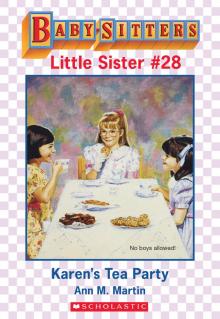 Karen's Tea Party
Karen's Tea Party Kristy and the Snobs
Kristy and the Snobs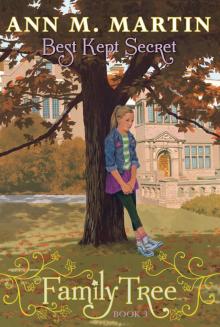 Best Kept Secret
Best Kept Secret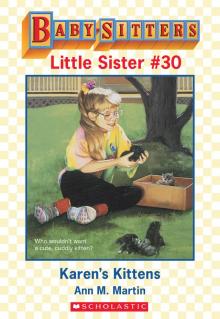 Karen's Kittens
Karen's Kittens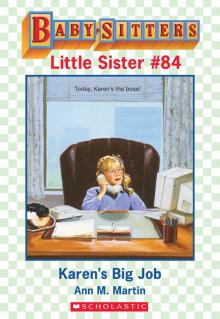 Karen's Big Job
Karen's Big Job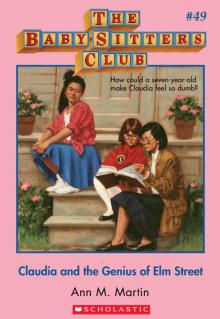 Claudia and the Genius of Elm Street
Claudia and the Genius of Elm Street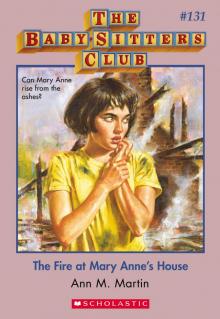 The Fire at Mary Anne's House
The Fire at Mary Anne's House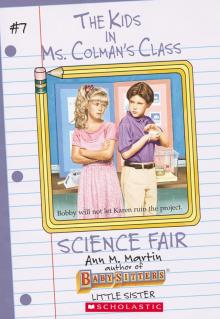 Science Fair
Science Fair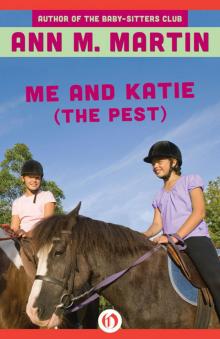 Me and Katie (The Pest)
Me and Katie (The Pest)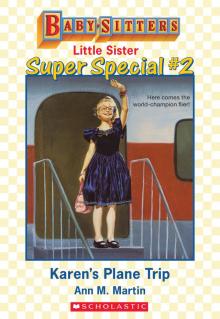 Karen's Plane Trip
Karen's Plane Trip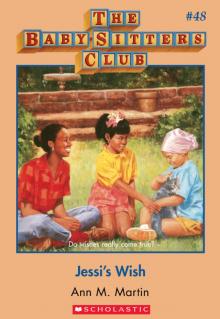 Jessi's Wish
Jessi's Wish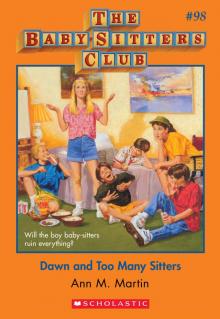 Dawn and Too Many Sitters
Dawn and Too Many Sitters Jessi and the Jewel Thieves
Jessi and the Jewel Thieves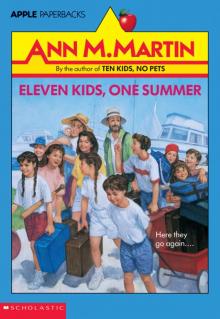 Eleven Kids, One Summer
Eleven Kids, One Summer Karen's Goldfish
Karen's Goldfish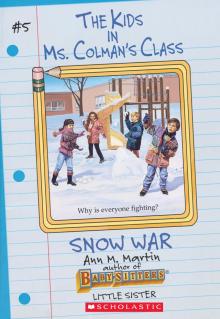 Snow War
Snow War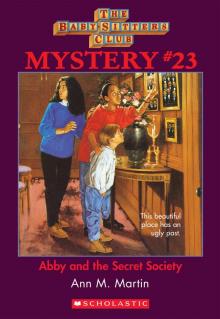 Abby and the Secret Society
Abby and the Secret Society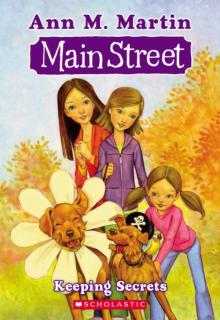 Keeping Secrets
Keeping Secrets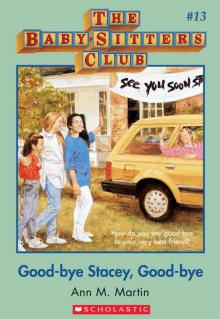 Good-Bye Stacey, Good-Bye
Good-Bye Stacey, Good-Bye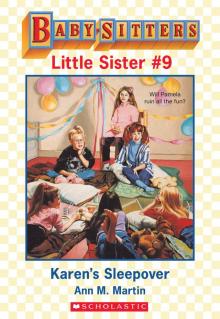 Karen's Sleepover
Karen's Sleepover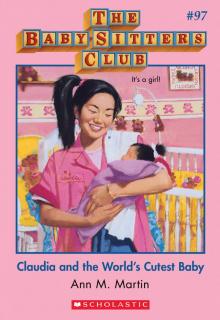 Claudia and the World's Cutest Baby
Claudia and the World's Cutest Baby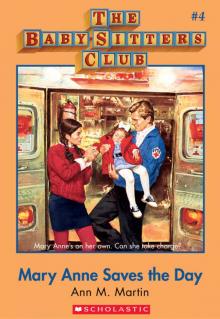 Mary Anne Saves the Day
Mary Anne Saves the Day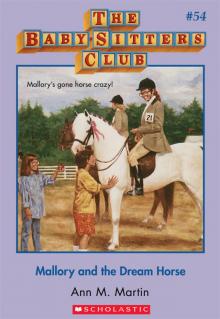 Mallory and the Dream Horse
Mallory and the Dream Horse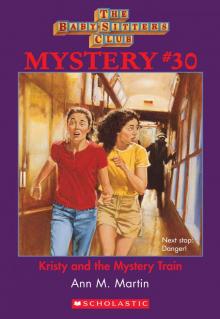 Kristy and the Mystery Train
Kristy and the Mystery Train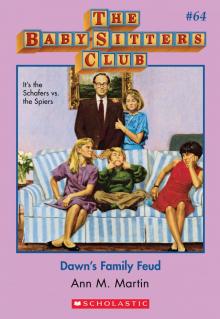 Dawn's Family Feud
Dawn's Family Feud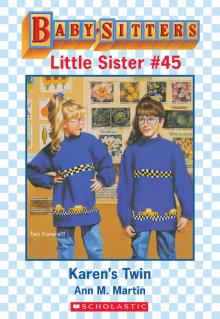 Karen's Twin
Karen's Twin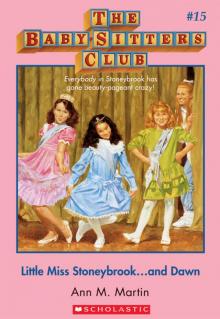 Little Miss Stoneybrook... And Dawn
Little Miss Stoneybrook... And Dawn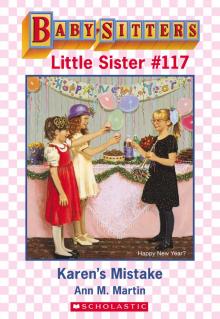 Karen's Mistake
Karen's Mistake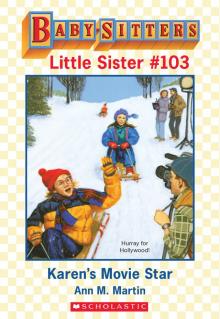 Karen's Movie Star
Karen's Movie Star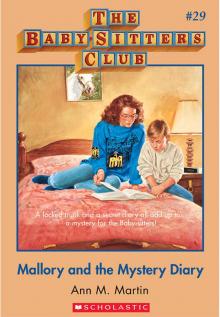 Mallory and the Mystery Diary
Mallory and the Mystery Diary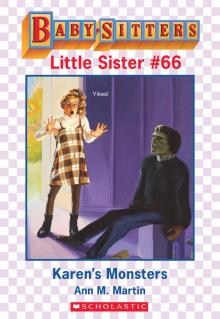 Karen's Monsters
Karen's Monsters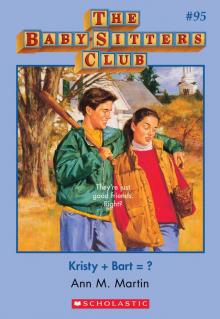 Kristy + Bart = ?
Kristy + Bart = ?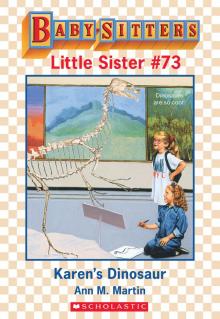 Karen's Dinosaur
Karen's Dinosaur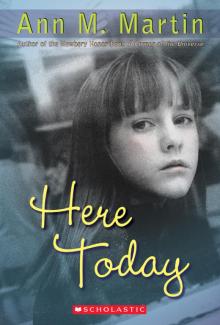 Here Today
Here Today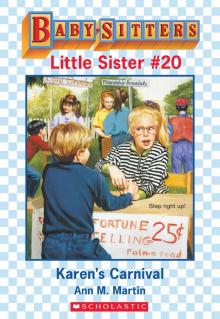 Karen's Carnival
Karen's Carnival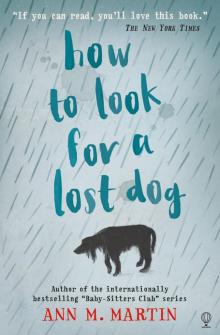 How to Look for a Lost Dog
How to Look for a Lost Dog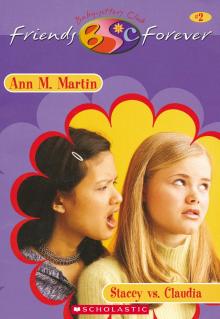 Stacey vs. Claudia
Stacey vs. Claudia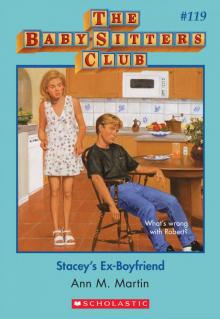 Stacey's Ex-Boyfriend
Stacey's Ex-Boyfriend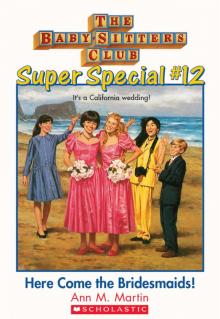 Here Come the Bridesmaids!
Here Come the Bridesmaids!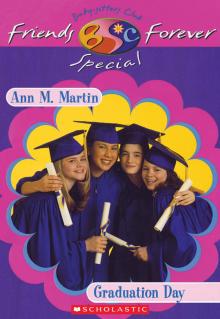 Graduation Day
Graduation Day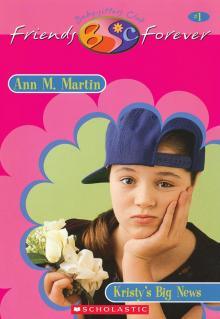 Kristy's Big News
Kristy's Big News Karen's School Surprise
Karen's School Surprise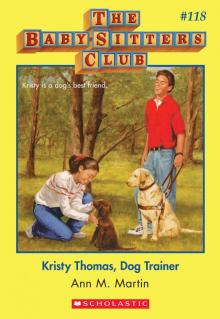 Kristy Thomas, Dog Trainer
Kristy Thomas, Dog Trainer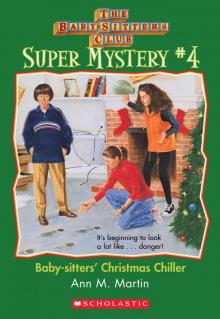 Baby-Sitters' Christmas Chiller
Baby-Sitters' Christmas Chiller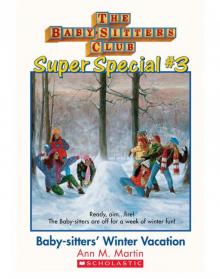 Baby-Sitters' Winter Vacation
Baby-Sitters' Winter Vacation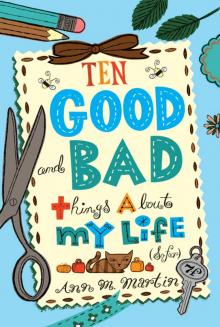 Ten Good and Bad Things About My Life
Ten Good and Bad Things About My Life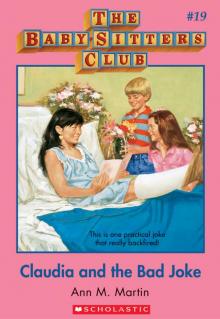 Claudia and the Bad Joke
Claudia and the Bad Joke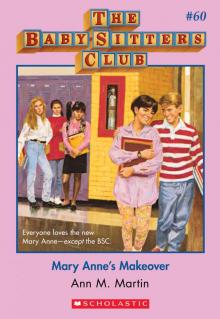 Mary Anne's Makeover
Mary Anne's Makeover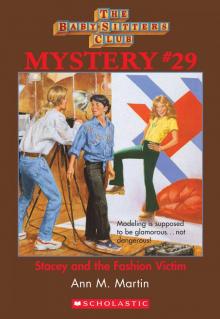 Stacey and the Fashion Victim
Stacey and the Fashion Victim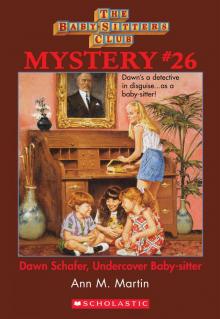 Dawn Schafer, Undercover Baby-Sitter
Dawn Schafer, Undercover Baby-Sitter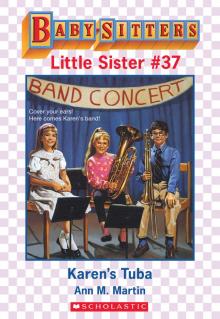 Karen's Tuba
Karen's Tuba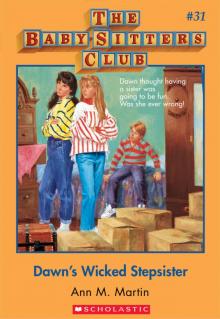 Dawn's Wicked Stepsister
Dawn's Wicked Stepsister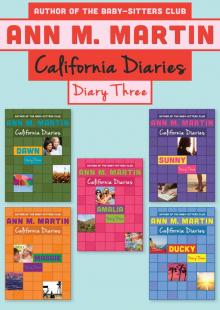 Diary Three: Dawn, Sunny, Maggie, Amalia, and Ducky
Diary Three: Dawn, Sunny, Maggie, Amalia, and Ducky Karen's Nanny
Karen's Nanny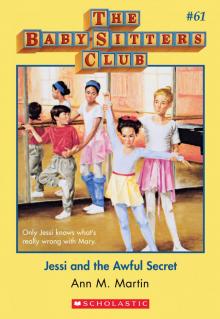 Jessi and the Awful Secret
Jessi and the Awful Secret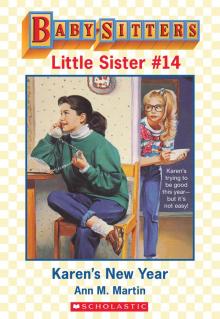 Karen's New Year
Karen's New Year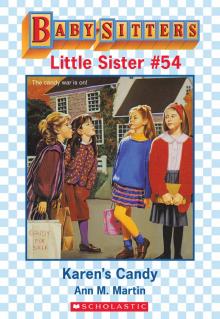 Karen's Candy
Karen's Candy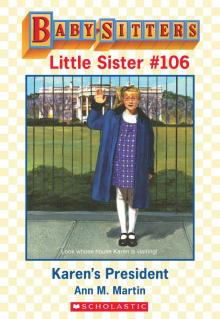 Karen's President
Karen's President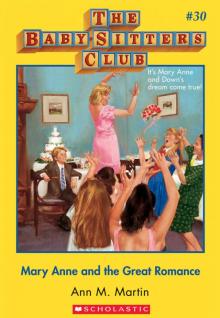 Mary Anne and the Great Romance
Mary Anne and the Great Romance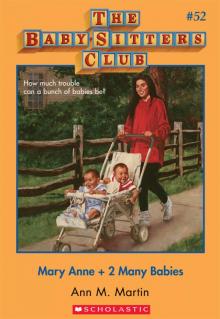 Mary Anne + 2 Many Babies
Mary Anne + 2 Many Babies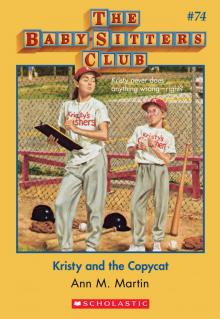 Kristy and the Copycat
Kristy and the Copycat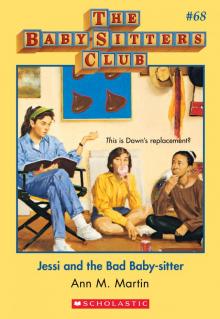 Jessi and the Bad Baby-Sitter
Jessi and the Bad Baby-Sitter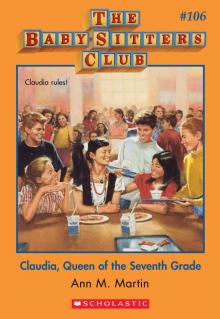 Claudia, Queen of the Seventh Grade
Claudia, Queen of the Seventh Grade Claudia and the Lighthouse Ghost
Claudia and the Lighthouse Ghost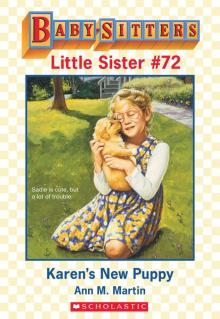 Karen's New Puppy
Karen's New Puppy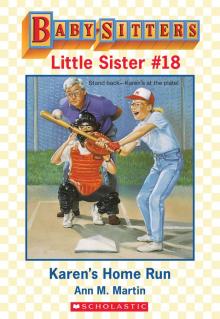 Karen's Home Run
Karen's Home Run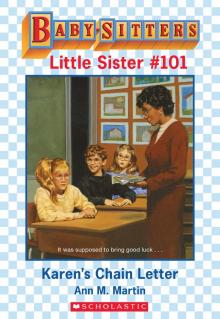 Karen's Chain Letter
Karen's Chain Letter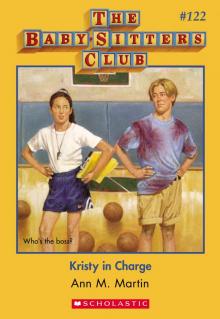 Kristy in Charge
Kristy in Charge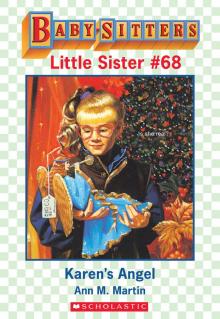 Karen's Angel
Karen's Angel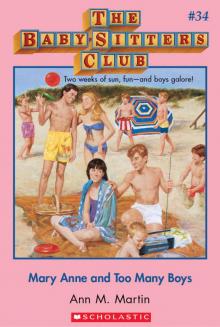 Mary Anne and Too Many Boys
Mary Anne and Too Many Boys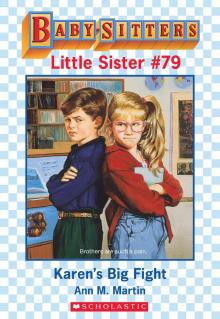 Karen's Big Fight
Karen's Big Fight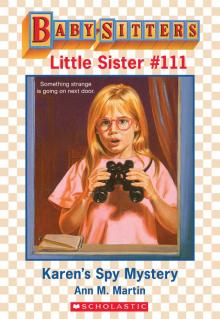 Karen's Spy Mystery
Karen's Spy Mystery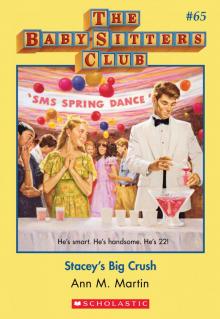 Stacey's Big Crush
Stacey's Big Crush Karen's School
Karen's School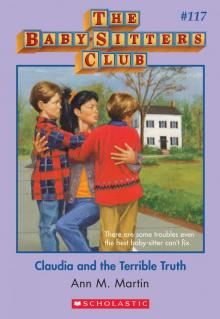 Claudia and the Terrible Truth
Claudia and the Terrible Truth Karen's Cowboy
Karen's Cowboy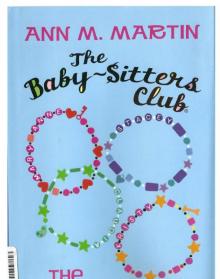 The Summer Before
The Summer Before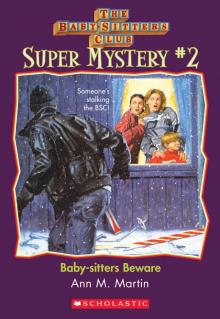 Beware, Dawn!
Beware, Dawn!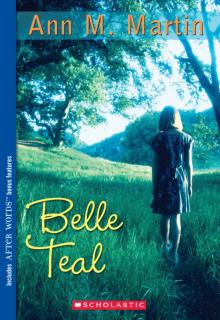 Belle Teale
Belle Teale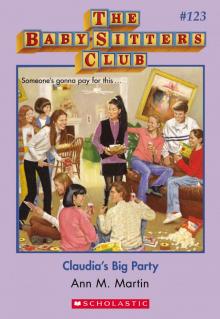 Claudia's Big Party
Claudia's Big Party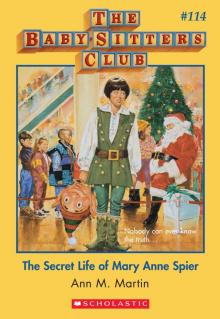 The Secret Life of Mary Anne Spier
The Secret Life of Mary Anne Spier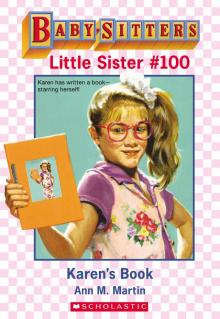 Karen's Book
Karen's Book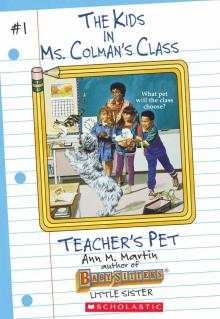 Teacher's Pet
Teacher's Pet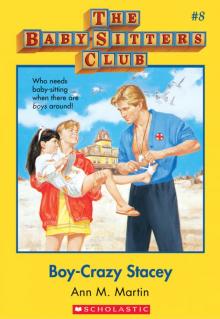 Boy-Crazy Stacey
Boy-Crazy Stacey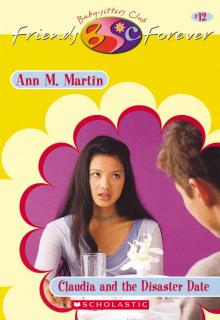 Claudia and the Disaster Date
Claudia and the Disaster Date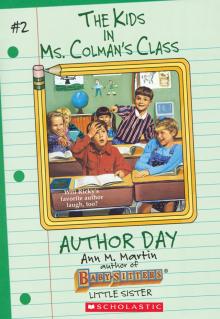 Author Day
Author Day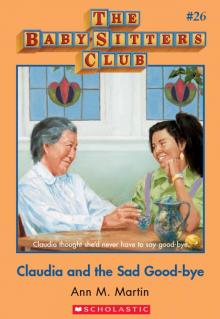 Claudia and the Sad Good-Bye
Claudia and the Sad Good-Bye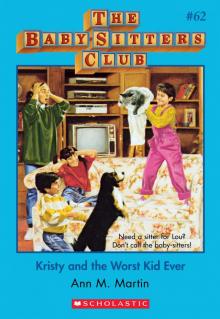 Kristy and the Worst Kid Ever
Kristy and the Worst Kid Ever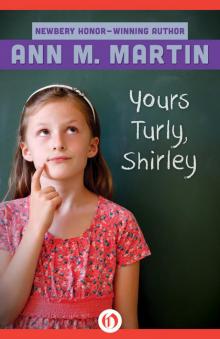 Yours Turly, Shirley
Yours Turly, Shirley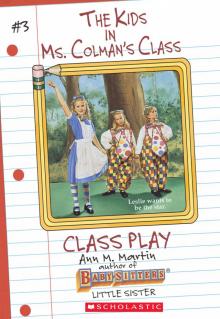 Class Play
Class Play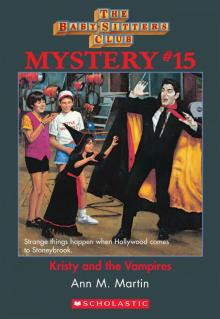 Kristy and the Vampires
Kristy and the Vampires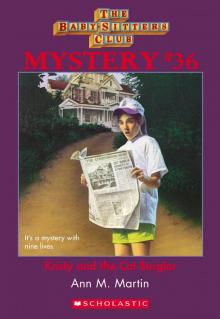 Kristy and the Cat Burglar
Kristy and the Cat Burglar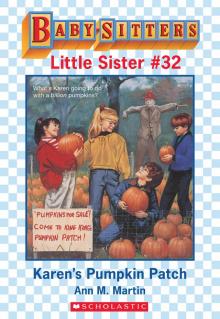 Karen's Pumpkin Patch
Karen's Pumpkin Patch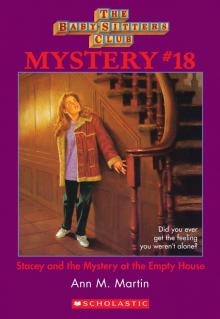 Stacey and the Mystery at the Empty House
Stacey and the Mystery at the Empty House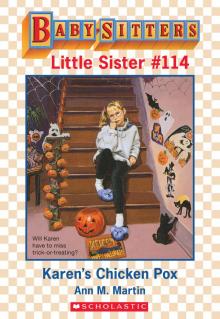 Karen's Chicken Pox
Karen's Chicken Pox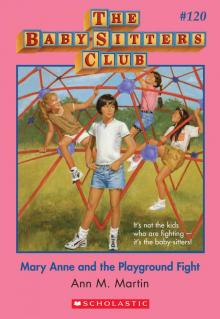 Mary Anne and the Playground Fight
Mary Anne and the Playground Fight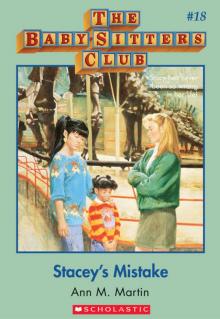 Stacey's Mistake
Stacey's Mistake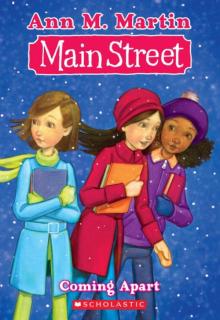 Coming Apart
Coming Apart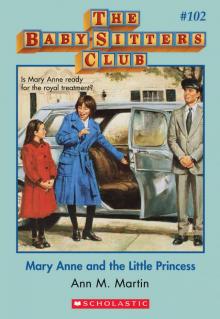 Mary Anne and the Little Princess
Mary Anne and the Little Princess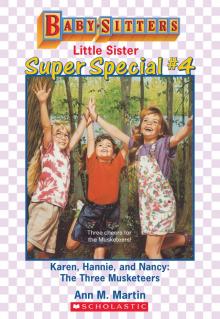 Karen, Hannie and Nancy: The Three Musketeers
Karen, Hannie and Nancy: The Three Musketeers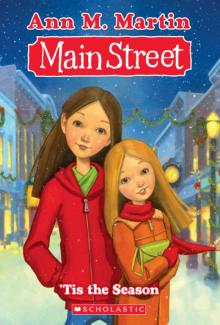 'Tis the Season
'Tis the Season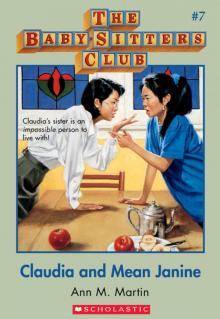 Claudia and Mean Janine
Claudia and Mean Janine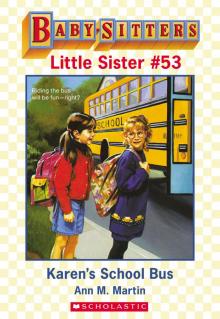 Karen's School Bus
Karen's School Bus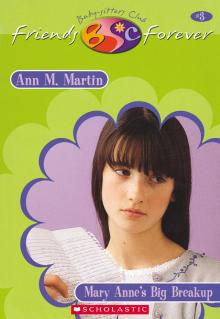 Mary Anne's Big Breakup
Mary Anne's Big Breakup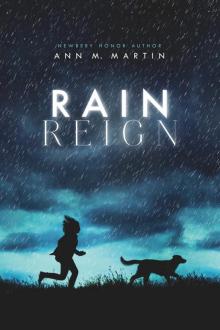 Rain Reign
Rain Reign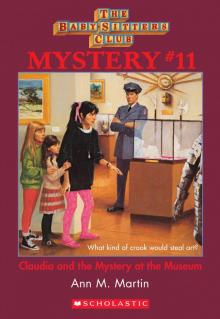 Claudia and the Mystery at the Museum
Claudia and the Mystery at the Museum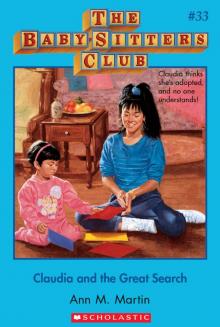 Claudia and the Great Search
Claudia and the Great Search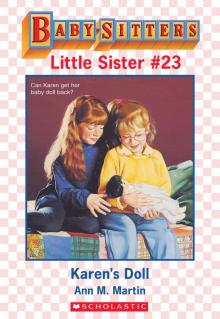 Karen's Doll
Karen's Doll Shannon's Story
Shannon's Story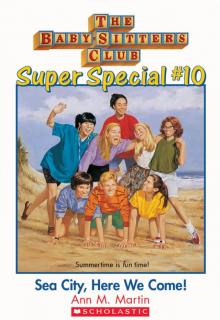 Sea City, Here We Come!
Sea City, Here We Come!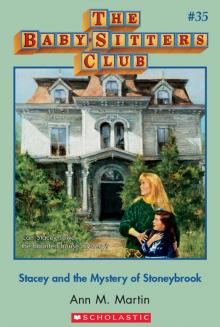 Stacey and the Mystery of Stoneybrook
Stacey and the Mystery of Stoneybrook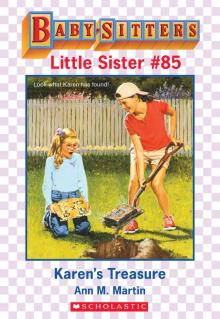 Karen's Treasure
Karen's Treasure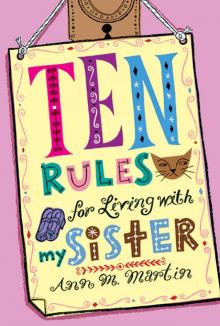 Ten Rules for Living With My Sister
Ten Rules for Living With My Sister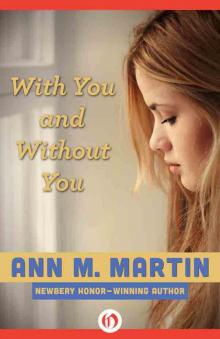 With You and Without You
With You and Without You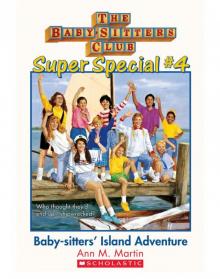 Baby-Sitters' Island Adventure
Baby-Sitters' Island Adventure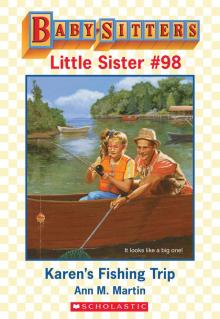 Karen's Fishing Trip
Karen's Fishing Trip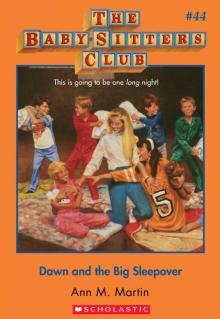 Dawn and the Big Sleepover
Dawn and the Big Sleepover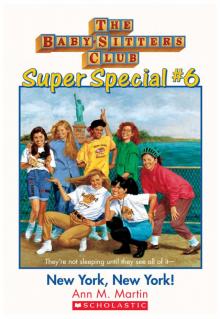 New York, New York!
New York, New York!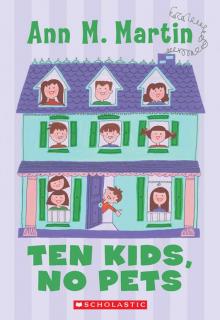 Ten Kids, No Pets
Ten Kids, No Pets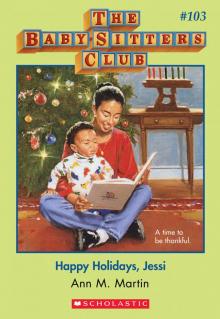 Happy Holidays, Jessi
Happy Holidays, Jessi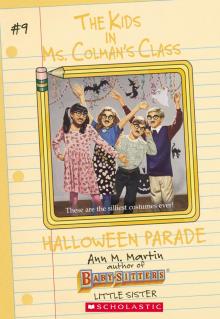 Halloween Parade
Halloween Parade Karen's New Holiday
Karen's New Holiday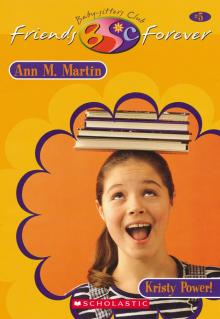 Kristy Power!
Kristy Power!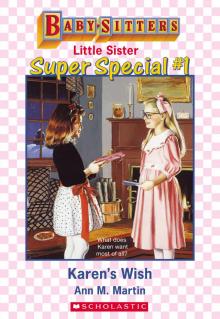 Karen's Wish
Karen's Wish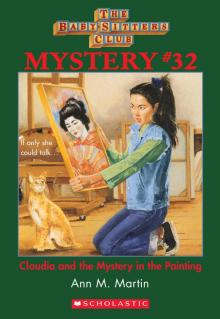 Claudia and the Mystery in the Painting
Claudia and the Mystery in the Painting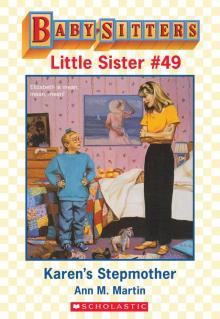 Karen's Stepmother
Karen's Stepmother Abby in Wonderland
Abby in Wonderland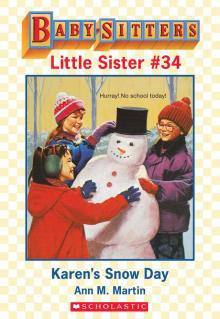 Karen's Snow Day
Karen's Snow Day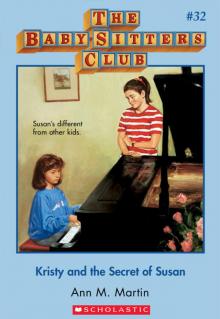 Kristy and the Secret of Susan
Kristy and the Secret of Susan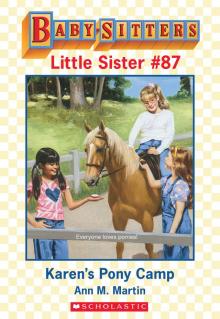 Karen's Pony Camp
Karen's Pony Camp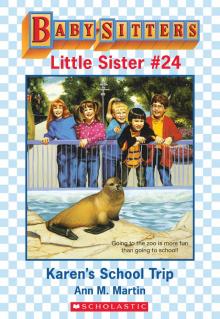 Karen's School Trip
Karen's School Trip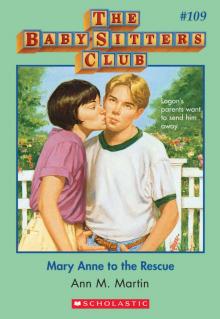 Mary Anne to the Rescue
Mary Anne to the Rescue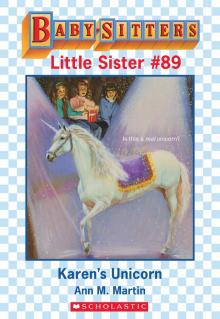 Karen's Unicorn
Karen's Unicorn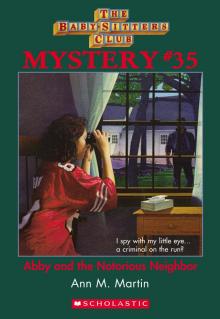 Abby and the Notorious Neighbor
Abby and the Notorious Neighbor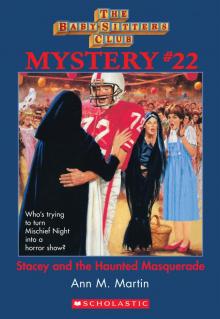 Stacey and the Haunted Masquerade
Stacey and the Haunted Masquerade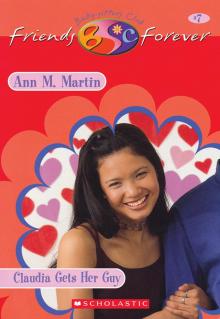 Claudia Gets Her Guy
Claudia Gets Her Guy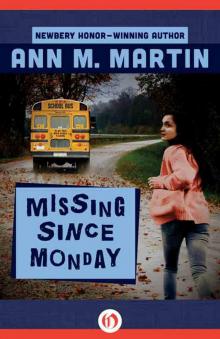 Missing Since Monday
Missing Since Monday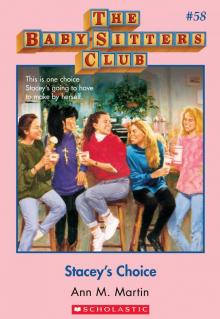 Stacey's Choice
Stacey's Choice Stacey's Ex-Best Friend
Stacey's Ex-Best Friend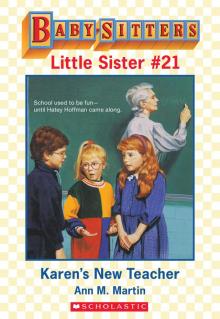 Karen's New Teacher
Karen's New Teacher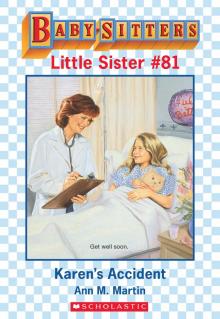 Karen's Accident
Karen's Accident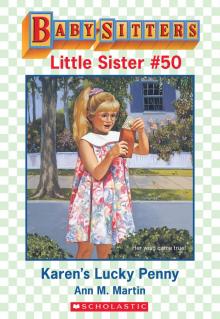 Karen's Lucky Penny
Karen's Lucky Penny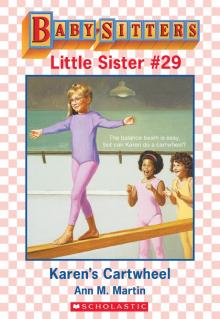 Karen's Cartwheel
Karen's Cartwheel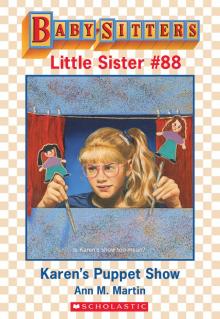 Karen's Puppet Show
Karen's Puppet Show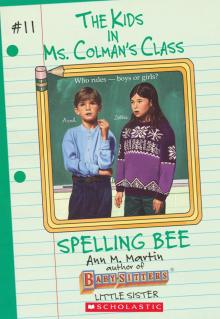 Spelling Bee
Spelling Bee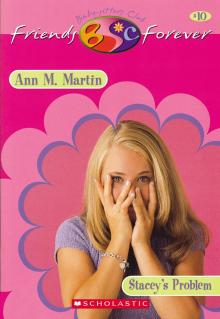 Stacey's Problem
Stacey's Problem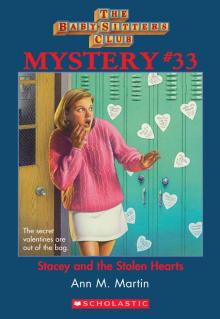 Stacey and the Stolen Hearts
Stacey and the Stolen Hearts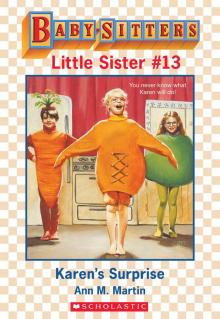 Karen's Surprise
Karen's Surprise Karen's Worst Day
Karen's Worst Day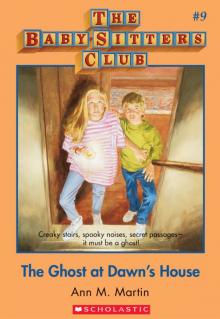 The Ghost at Dawn's House
The Ghost at Dawn's House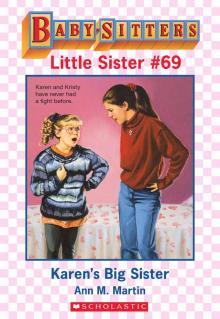 Karen's Big Sister
Karen's Big Sister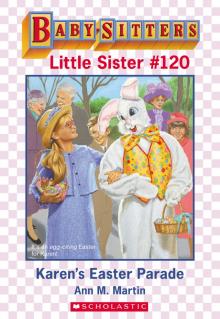 Karen's Easter Parade
Karen's Easter Parade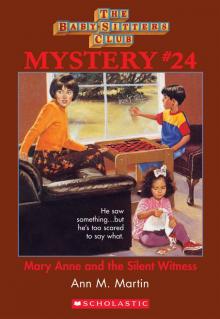 Mary Anne and the Silent Witness
Mary Anne and the Silent Witness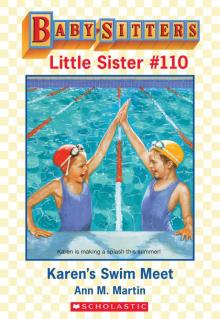 Karen's Swim Meet
Karen's Swim Meet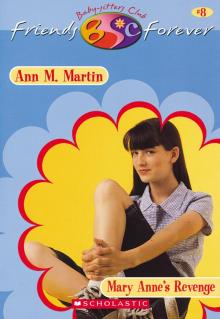 Mary Anne's Revenge
Mary Anne's Revenge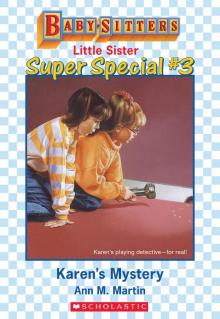 Karen's Mystery
Karen's Mystery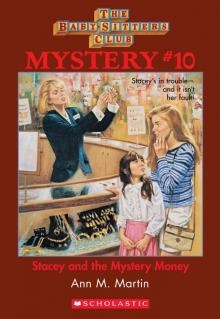 Stacey and the Mystery Money
Stacey and the Mystery Money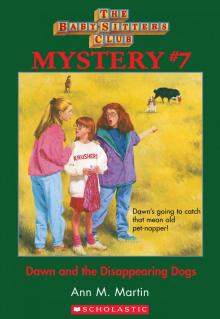 Dawn and the Disappearing Dogs
Dawn and the Disappearing Dogs Karen's Christmas Tree
Karen's Christmas Tree Welcome to Camden Falls
Welcome to Camden Falls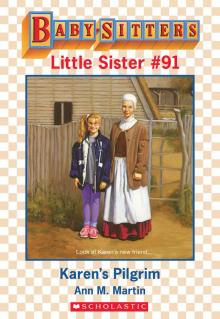 Karen's Pilgrim
Karen's Pilgrim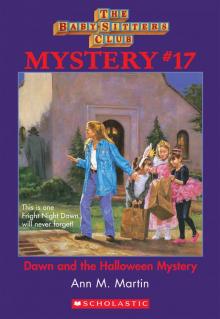 Dawn and the Halloween Mystery
Dawn and the Halloween Mystery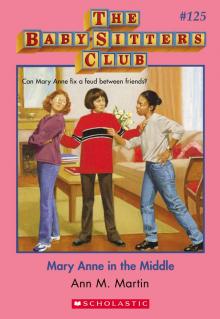 Mary Anne in the Middle
Mary Anne in the Middle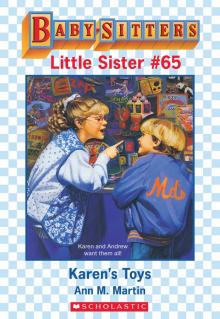 Karen's Toys
Karen's Toys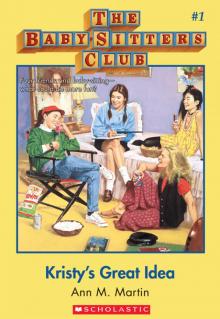 Kristy's Great Idea
Kristy's Great Idea Claudia and the Middle School Mystery
Claudia and the Middle School Mystery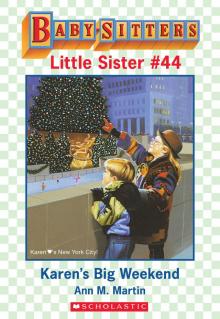 Karen's Big Weekend
Karen's Big Weekend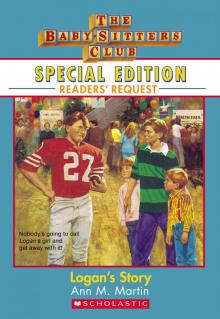 Logan's Story
Logan's Story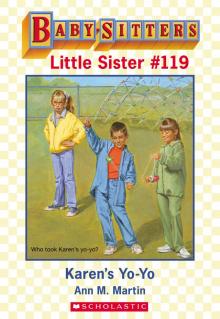 Karen's Yo-Yo
Karen's Yo-Yo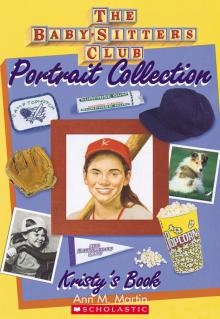 Kristy's Book
Kristy's Book Mallory and the Ghost Cat
Mallory and the Ghost Cat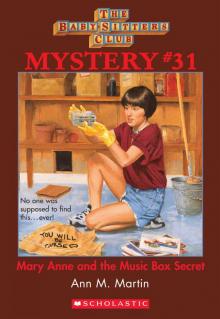 Mary Anne and the Music
Mary Anne and the Music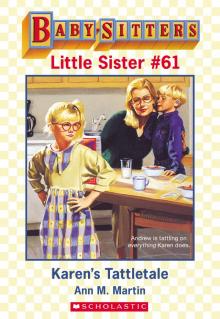 Karen's Tattletale
Karen's Tattletale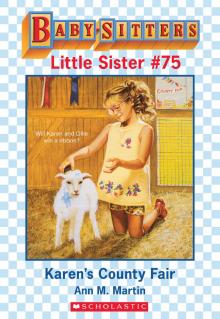 Karen's County Fair
Karen's County Fair Karen's Mermaid
Karen's Mermaid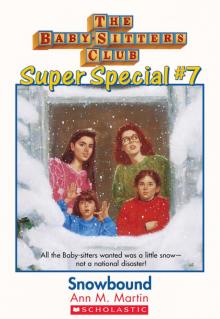 Snowbound
Snowbound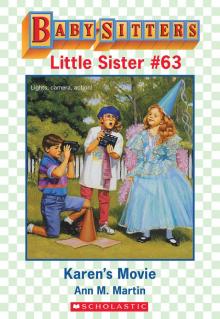 Karen's Movie
Karen's Movie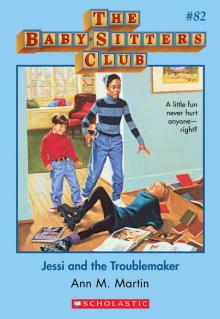 Jessi and the Troublemaker
Jessi and the Troublemaker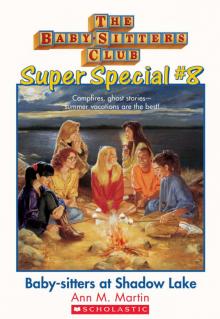 Baby-Sitters at Shadow Lake
Baby-Sitters at Shadow Lake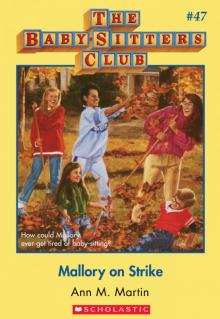 Mallory on Strike
Mallory on Strike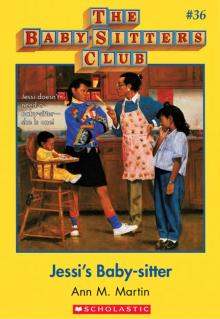 Jessi's Baby-Sitter
Jessi's Baby-Sitter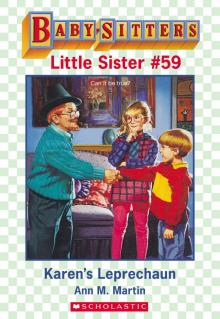 Karen's Leprechaun
Karen's Leprechaun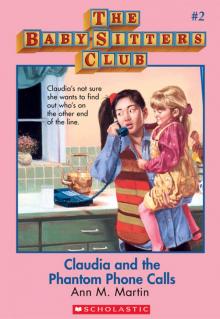 Claudia and the Phantom Phone Calls
Claudia and the Phantom Phone Calls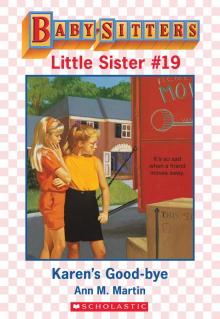 Karen's Good-Bye
Karen's Good-Bye Karen's Figure Eight
Karen's Figure Eight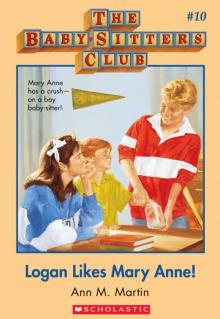 Logan Likes Mary Anne!
Logan Likes Mary Anne!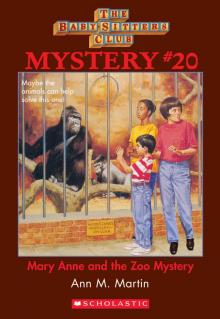 Mary Anne and the Zoo Mystery
Mary Anne and the Zoo Mystery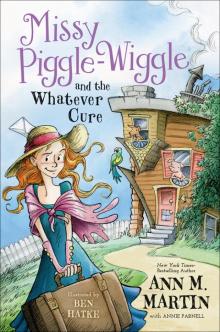 Missy Piggle-Wiggle and the Whatever Cure
Missy Piggle-Wiggle and the Whatever Cure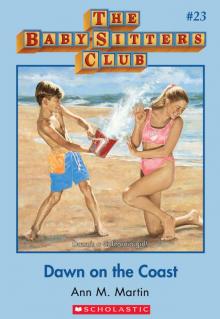 Dawn on the Coast
Dawn on the Coast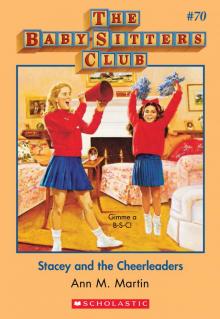 Stacey and the Cheerleaders
Stacey and the Cheerleaders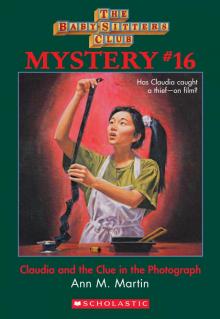 Claudia and the Clue in the Photograph
Claudia and the Clue in the Photograph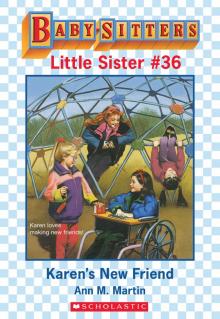 Karen's New Friend
Karen's New Friend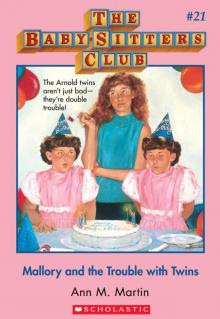 Mallory and the Trouble With Twins
Mallory and the Trouble With Twins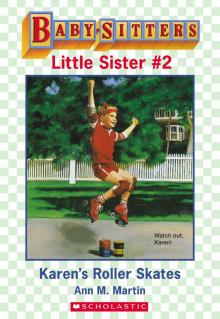 Karen's Roller Skates
Karen's Roller Skates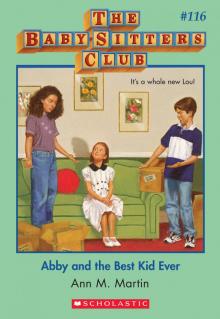 Abby and the Best Kid Ever
Abby and the Best Kid Ever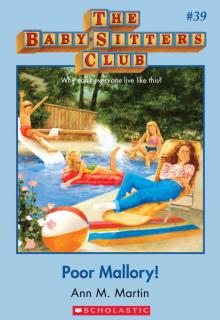 Poor Mallory!
Poor Mallory!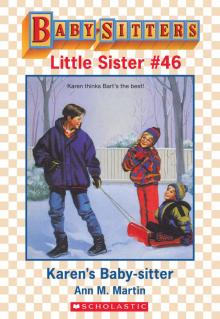 Karen's Witch
Karen's Witch Karen's Grandmothers
Karen's Grandmothers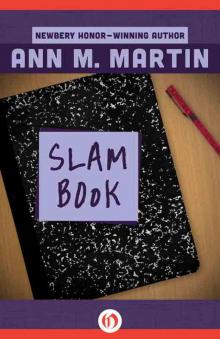 Slam Book
Slam Book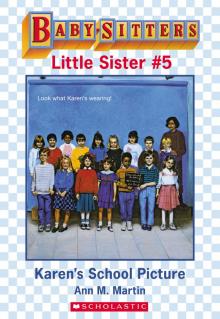 Karen's School Picture
Karen's School Picture Karen's Reindeer
Karen's Reindeer Kristy's Big Day
Kristy's Big Day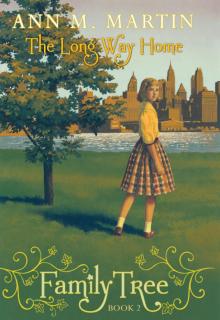 The Long Way Home
The Long Way Home Karen's Sleigh Ride
Karen's Sleigh Ride On Christmas Eve
On Christmas Eve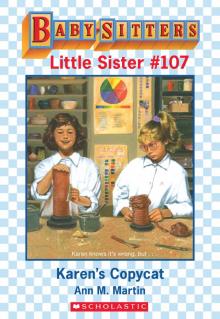 Karen's Copycat
Karen's Copycat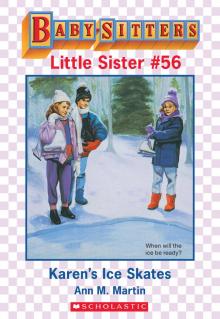 Karen's Ice Skates
Karen's Ice Skates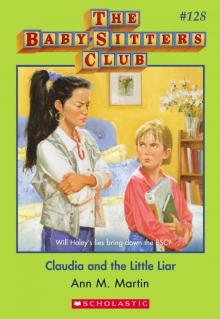 Claudia and the Little Liar
Claudia and the Little Liar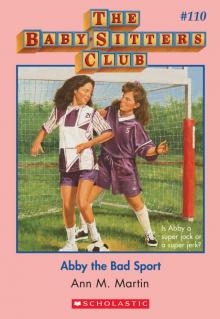 Abby the Bad Sport
Abby the Bad Sport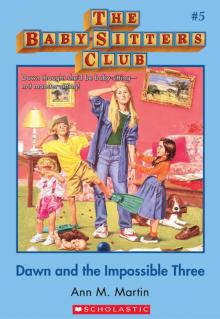 The Baby-Sitters Club #5: Dawn and the Impossible Three
The Baby-Sitters Club #5: Dawn and the Impossible Three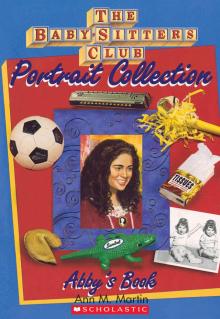 Abby's Book
Abby's Book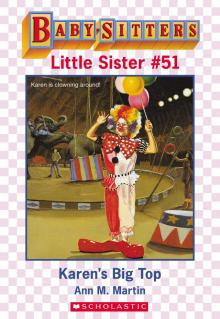 Karen's Big Top
Karen's Big Top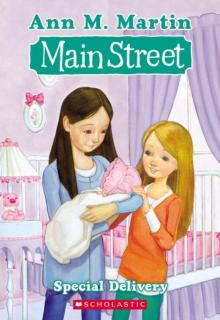 Main Street #8: Special Delivery
Main Street #8: Special Delivery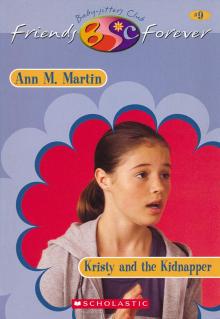 Kristy and the Kidnapper
Kristy and the Kidnapper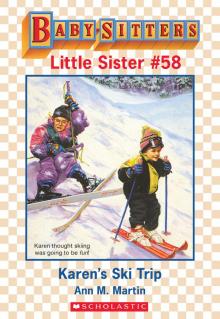 Karen's Ski Trip
Karen's Ski Trip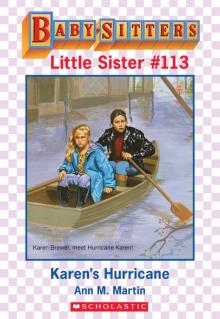 Karen's Hurricane
Karen's Hurricane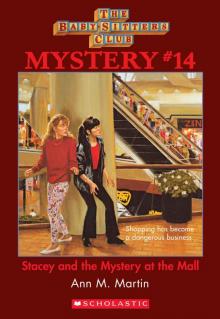 Stacey and the Mystery at the Mall
Stacey and the Mystery at the Mall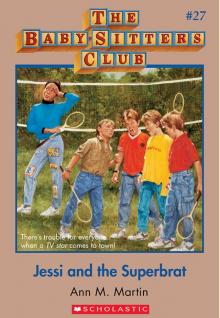 Jessi and the Superbrat
Jessi and the Superbrat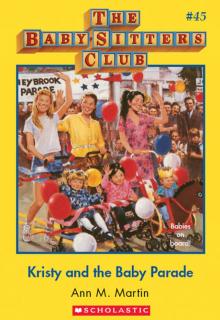 Kristy and the Baby Parade
Kristy and the Baby Parade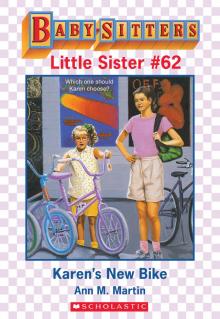 Karen's New Bike
Karen's New Bike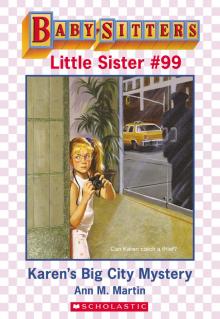 Karen's Big City Mystery
Karen's Big City Mystery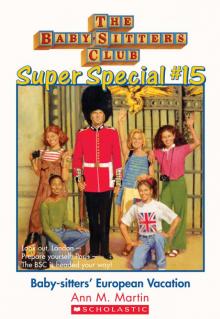 Baby-Sitters' European Vacation
Baby-Sitters' European Vacation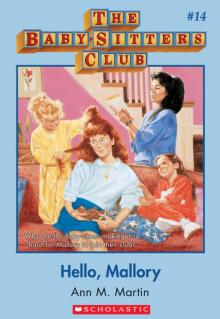 Hello, Mallory
Hello, Mallory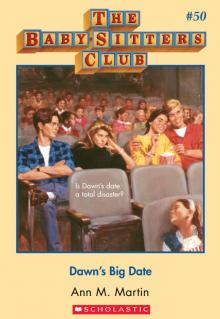 Dawn's Big Date
Dawn's Big Date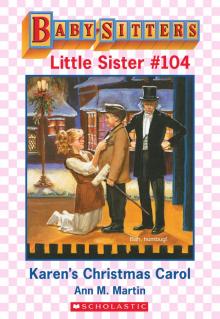 Karen's Christmas Carol
Karen's Christmas Carol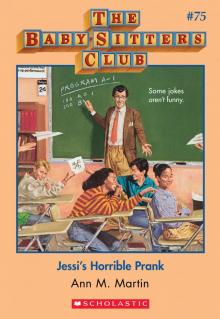 Jessi's Horrible Prank
Jessi's Horrible Prank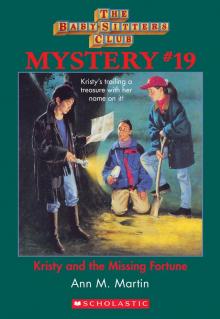 Kristy and the Missing Fortune
Kristy and the Missing Fortune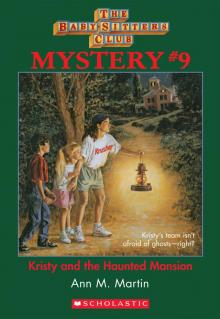 Kristy and the Haunted Mansion
Kristy and the Haunted Mansion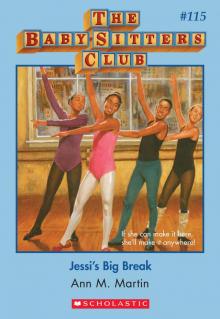 Jessi's Big Break
Jessi's Big Break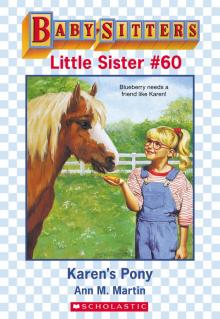 Karen's Pony
Karen's Pony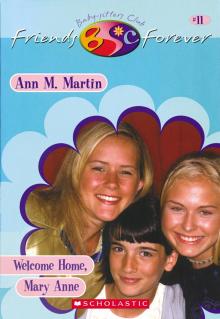 Welcome Home, Mary Anne
Welcome Home, Mary Anne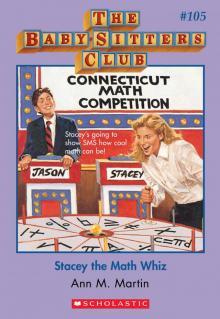 Stacey the Math Whiz
Stacey the Math Whiz September Surprises
September Surprises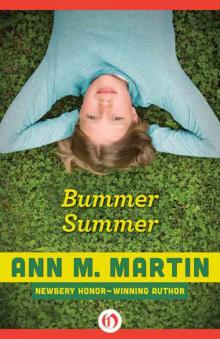 Bummer Summer
Bummer Summer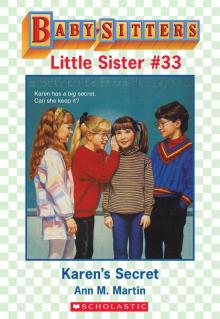 Karen's Secret
Karen's Secret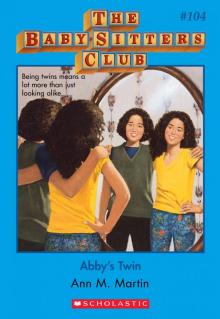 Abby's Twin
Abby's Twin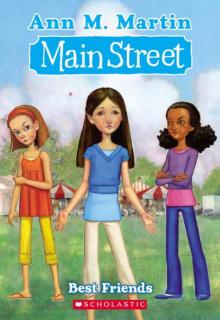 Main Street #4: Best Friends
Main Street #4: Best Friends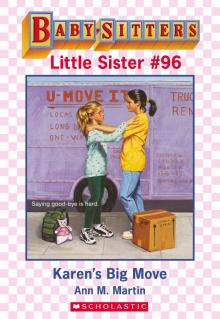 Karen's Big Move
Karen's Big Move Mary Anne Misses Logan
Mary Anne Misses Logan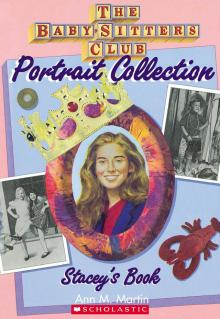 Stacey's Book
Stacey's Book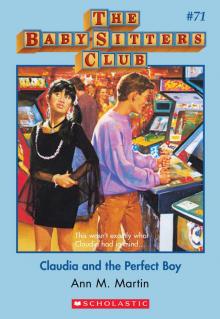 Claudia and the Perfect Boy
Claudia and the Perfect Boy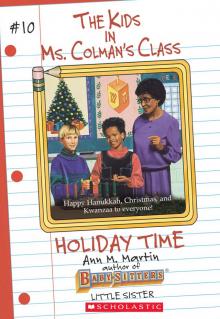 Holiday Time
Holiday Time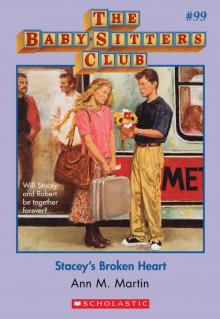 Stacey's Broken Heart
Stacey's Broken Heart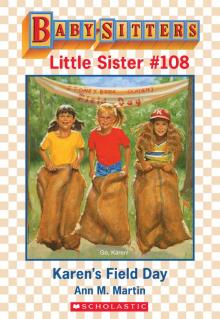 Karen's Field Day
Karen's Field Day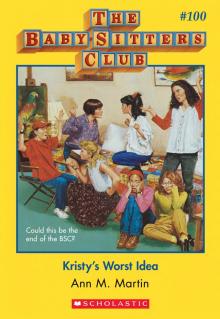 Kristy's Worst Idea
Kristy's Worst Idea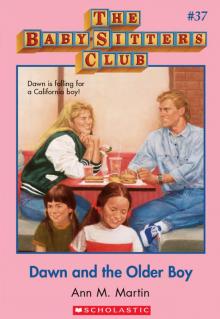 Dawn and the Older Boy
Dawn and the Older Boy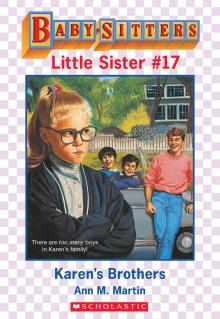 Karen's Brothers
Karen's Brothers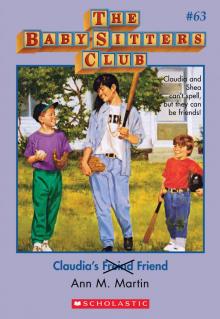 Claudia's Friend
Claudia's Friend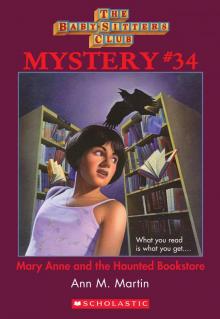 Mary Anne and the Haunted Bookstore
Mary Anne and the Haunted Bookstore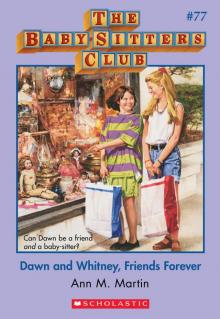 Dawn and Whitney, Friends Forever
Dawn and Whitney, Friends Forever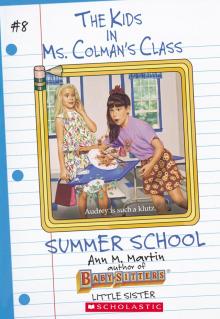 Summer School
Summer School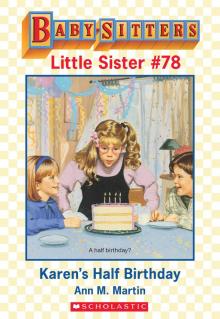 Karen's Birthday
Karen's Birthday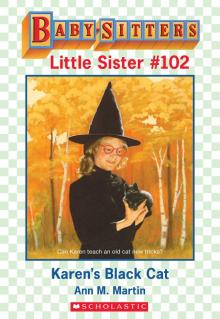 Karen's Black Cat
Karen's Black Cat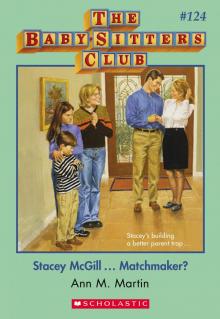 Stacey McGill... Matchmaker?
Stacey McGill... Matchmaker?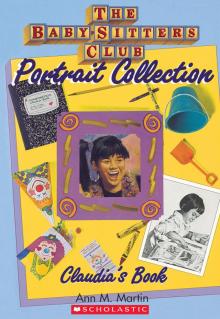 Claudia's Book
Claudia's Book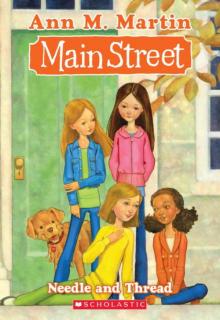 Main Street #2: Needle and Thread
Main Street #2: Needle and Thread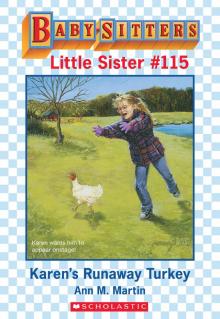 Karen's Runaway Turkey
Karen's Runaway Turkey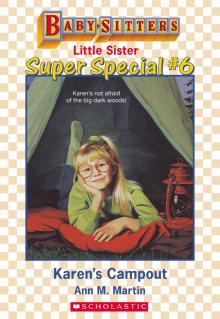 Karen's Campout
Karen's Campout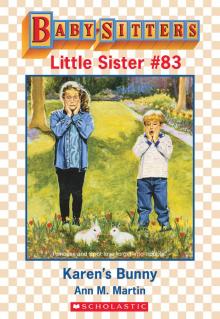 Karen's Bunny
Karen's Bunny Claudia and the New Girl
Claudia and the New Girl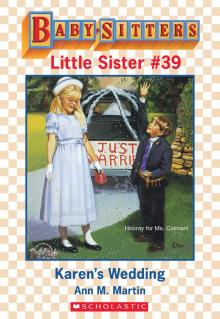 Karen's Wedding
Karen's Wedding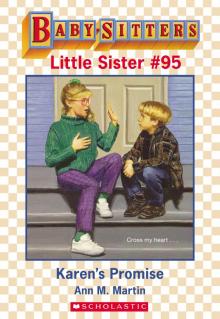 Karen's Promise
Karen's Promise Karen's Snow Princess
Karen's Snow Princess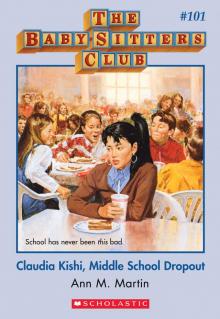 Claudia Kishi, Middle School Dropout
Claudia Kishi, Middle School Dropout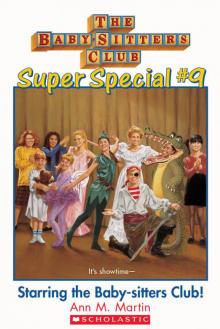 Starring the Baby-Sitters Club!
Starring the Baby-Sitters Club!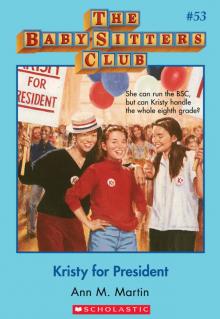 Kristy for President
Kristy for President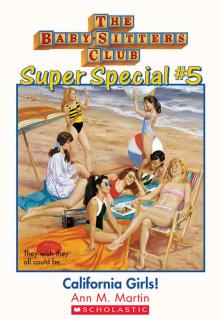 California Girls!
California Girls!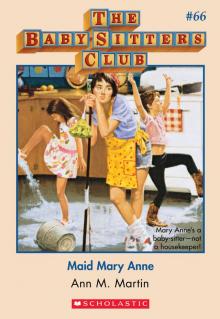 Maid Mary Anne
Maid Mary Anne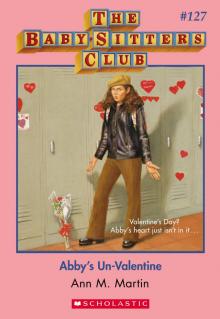 Abby's Un-Valentine
Abby's Un-Valentine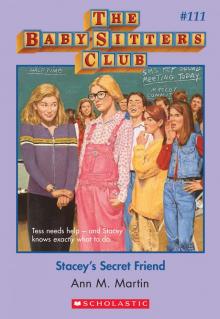 Stacey's Secret Friend
Stacey's Secret Friend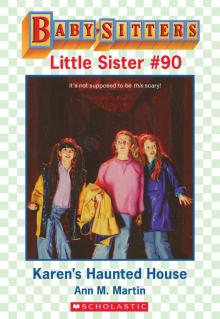 Karen's Haunted House
Karen's Haunted House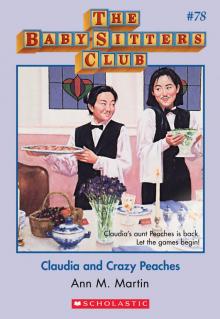 Claudia and Crazy Peaches
Claudia and Crazy Peaches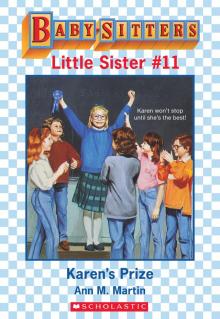 Karen's Prize
Karen's Prize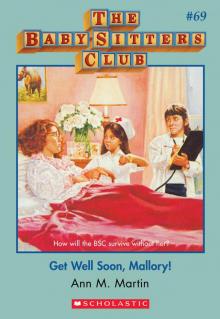 Get Well Soon, Mallory!
Get Well Soon, Mallory!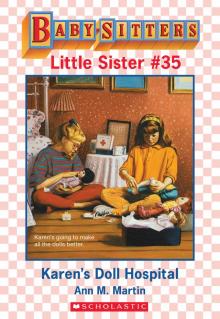 Karen's Doll Hospital
Karen's Doll Hospital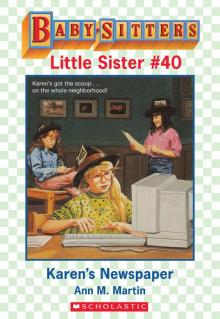 Karen's Newspaper
Karen's Newspaper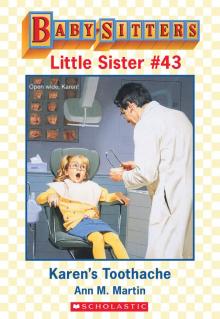 Karen's Toothache
Karen's Toothache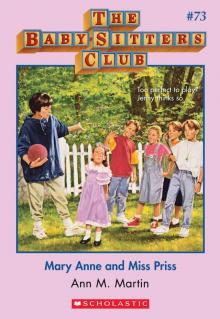 Mary Anne and Miss Priss
Mary Anne and Miss Priss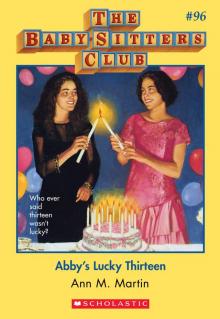 Abby's Lucky Thirteen
Abby's Lucky Thirteen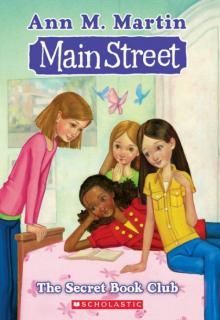 The Secret Book Club
The Secret Book Club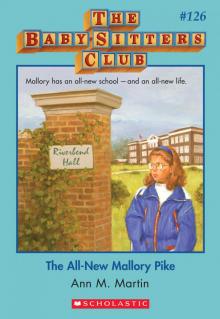 The All-New Mallory Pike
The All-New Mallory Pike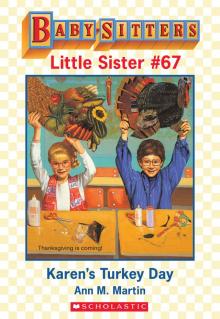 Karen's Turkey Day
Karen's Turkey Day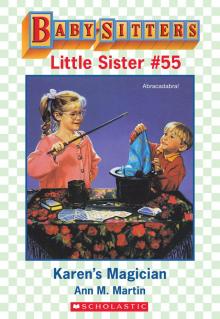 Karen's Magician
Karen's Magician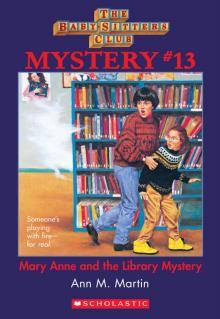 Mary Anne and the Library Mystery
Mary Anne and the Library Mystery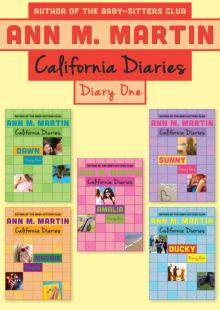 Diary One: Dawn, Sunny, Maggie, Amalia, and Ducky
Diary One: Dawn, Sunny, Maggie, Amalia, and Ducky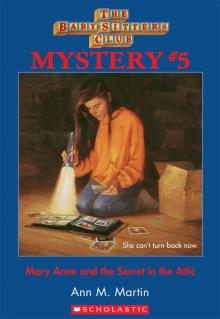 Mary Anne and the Secret in the Attic
Mary Anne and the Secret in the Attic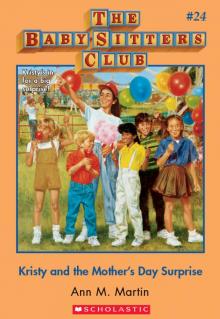 Kristy and the Mother's Day Surprise
Kristy and the Mother's Day Surprise Karen's in Love
Karen's in Love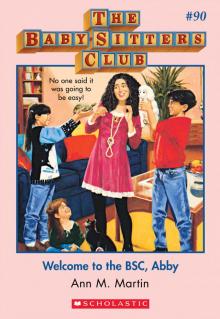 Welcome to the BSC, Abby
Welcome to the BSC, Abby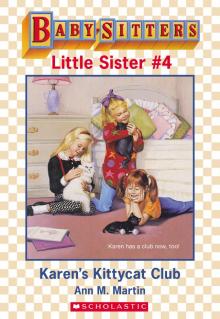 Karen's Kittycat Club
Karen's Kittycat Club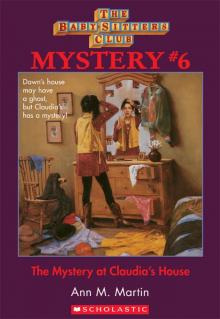 The Mystery at Claudia's House
The Mystery at Claudia's House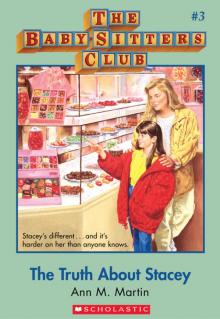 The Truth About Stacey
The Truth About Stacey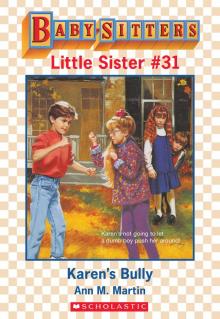 Karen's Bully
Karen's Bully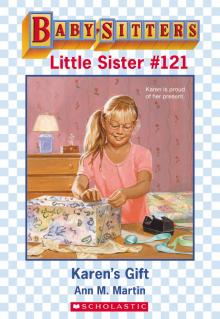 Karen's Gift
Karen's Gift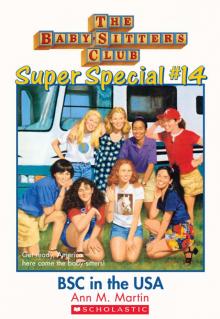 BSC in the USA
BSC in the USA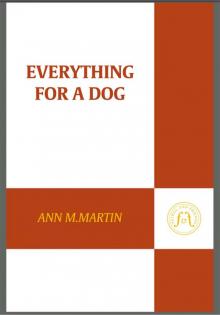 Everything for a Dog
Everything for a Dog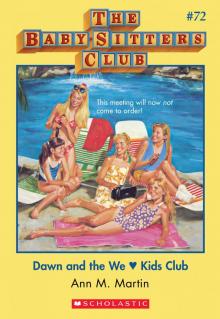 Dawn and the We Love Kids Club
Dawn and the We Love Kids Club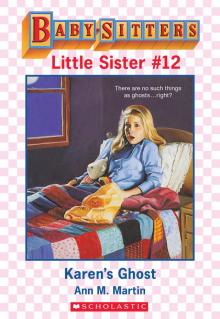 Karen's Ghost
Karen's Ghost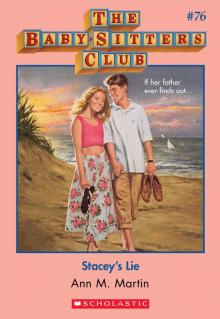 Stacey's Lie
Stacey's Lie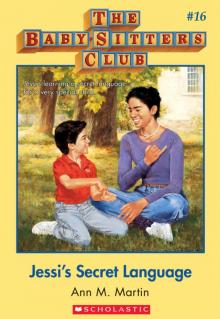 Jessi's Secret Language
Jessi's Secret Language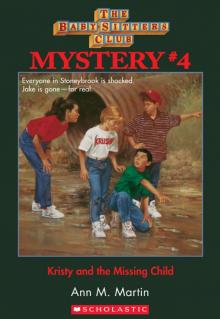 Kristy and the Missing Child
Kristy and the Missing Child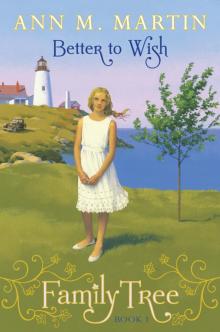 Better to Wish
Better to Wish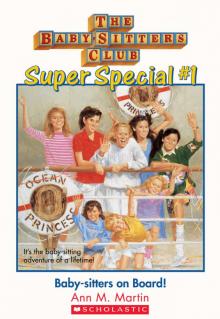 Baby-Sitters on Board!
Baby-Sitters on Board!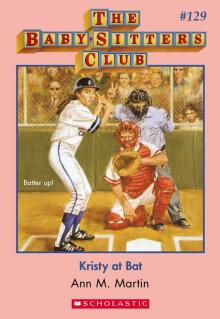 Kristy at Bat
Kristy at Bat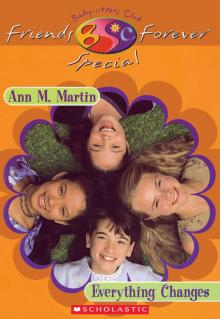 Everything Changes
Everything Changes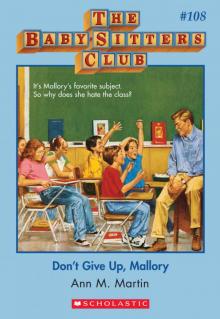 Don't Give Up, Mallory
Don't Give Up, Mallory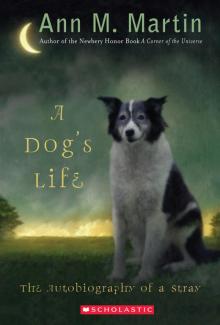 A Dog's Life: The Autobiography of a Stray
A Dog's Life: The Autobiography of a Stray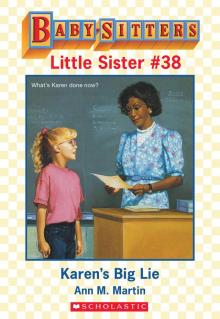 Karen's Big Lie
Karen's Big Lie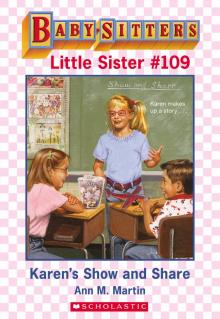 Karen's Show and Share
Karen's Show and Share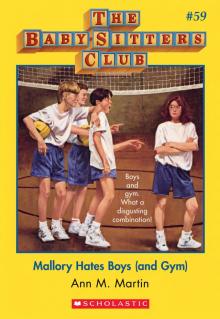 Mallory Hates Boys (and Gym)
Mallory Hates Boys (and Gym)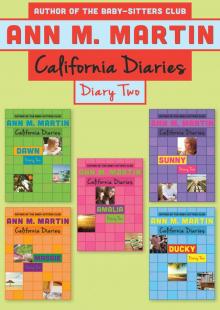 Diary Two: Dawn, Sunny, Maggie, Amalia, and Ducky
Diary Two: Dawn, Sunny, Maggie, Amalia, and Ducky Karen's Pen Pal
Karen's Pen Pal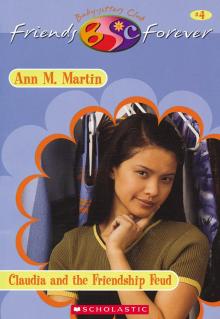 Claudia and the Friendship Feud
Claudia and the Friendship Feud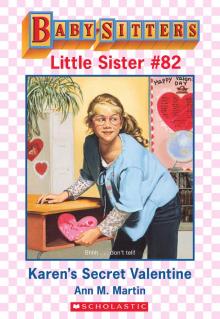 Karen's Secret Valentine
Karen's Secret Valentine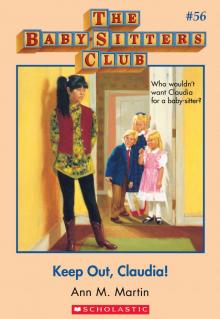 Keep Out, Claudia!
Keep Out, Claudia!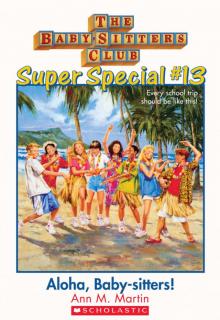 Aloha, Baby-Sitters!
Aloha, Baby-Sitters!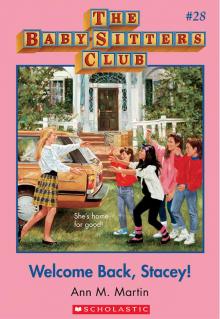 Welcome Back, Stacey
Welcome Back, Stacey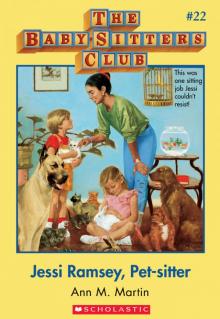 Jessi Ramsey, Pet-Sitter
Jessi Ramsey, Pet-Sitter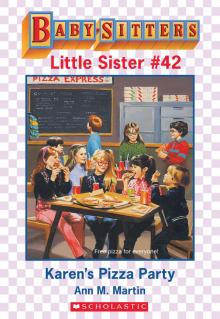 Karen's Pizza Party
Karen's Pizza Party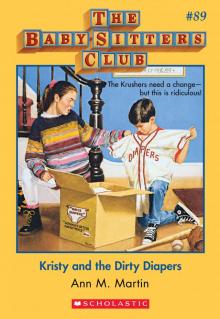 Kristy and the Dirty Diapers
Kristy and the Dirty Diapers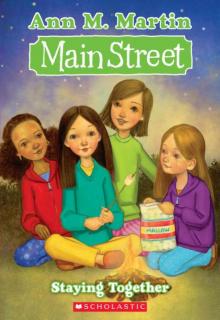 Staying Together
Staying Together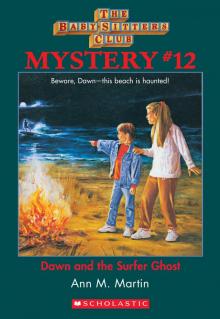 Dawn and the Surfer Ghost
Dawn and the Surfer Ghost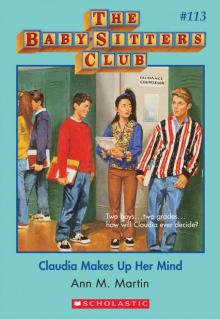 Claudia Makes Up Her Mind
Claudia Makes Up Her Mind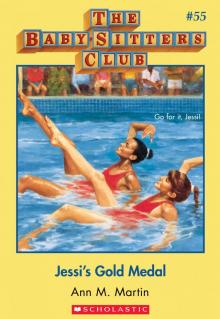 Jessi's Gold Medal
Jessi's Gold Medal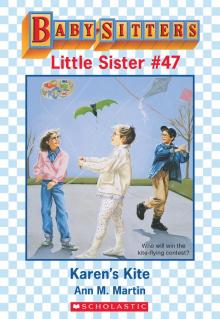 Karen's Kite
Karen's Kite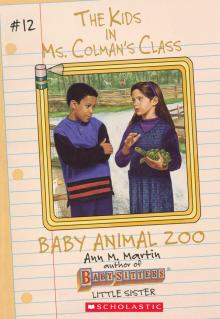 Baby Animal Zoo
Baby Animal Zoo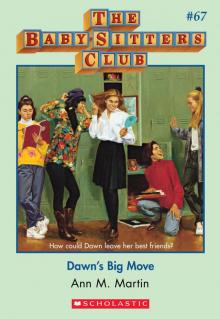 Dawn's Big Move
Dawn's Big Move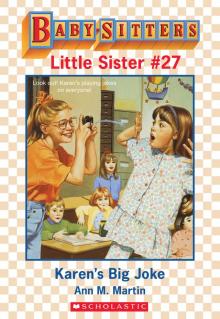 Karen's Big Joke
Karen's Big Joke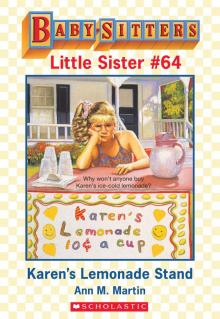 Karen's Lemonade Stand
Karen's Lemonade Stand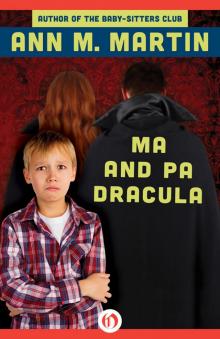 Ma and Pa Dracula
Ma and Pa Dracula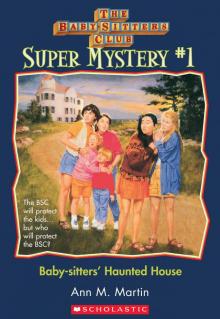 Baby-Sitters' Haunted House
Baby-Sitters' Haunted House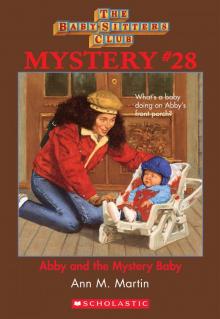 Abby and the Mystery Baby
Abby and the Mystery Baby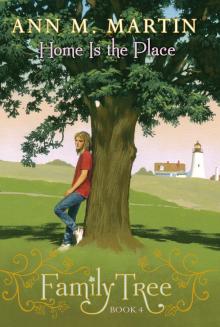 Home Is the Place
Home Is the Place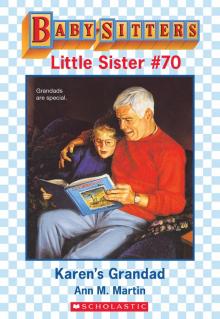 Karen's Grandad
Karen's Grandad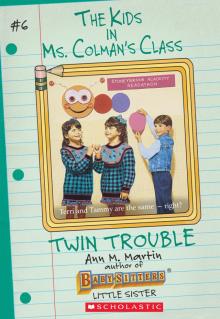 Twin Trouble
Twin Trouble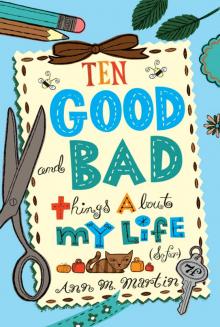 Ten Good and Bad Things About My Life (So Far)
Ten Good and Bad Things About My Life (So Far)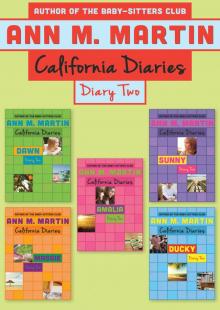 Diary Two
Diary Two Baby-Sitters Club 027
Baby-Sitters Club 027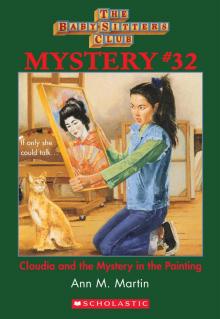 Claudia and the Mystery Painting
Claudia and the Mystery Painting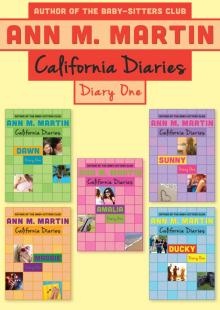 Diary One
Diary One Baby-Sitters Club 037
Baby-Sitters Club 037 Baby-Sitters Club 028
Baby-Sitters Club 028 Baby-Sitters Club 085
Baby-Sitters Club 085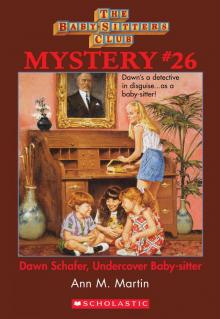 Dawn Schaffer Undercover Baby-Sitter
Dawn Schaffer Undercover Baby-Sitter Jessi's Babysitter
Jessi's Babysitter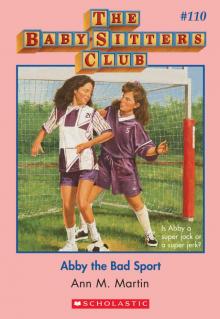 The Baby-Sitters Club #110: Abby the Bad Sport (Baby-Sitters Club, The)
The Baby-Sitters Club #110: Abby the Bad Sport (Baby-Sitters Club, The) Karen's Little Sister
Karen's Little Sister Baby-Sitters Club 058
Baby-Sitters Club 058 Claudia And The Genius On Elm St.
Claudia And The Genius On Elm St.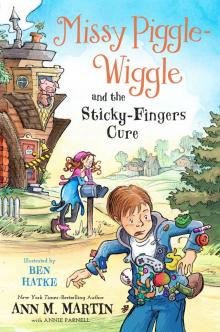 Missy Piggle-Wiggle and the Sticky-Fingers Cure
Missy Piggle-Wiggle and the Sticky-Fingers Cure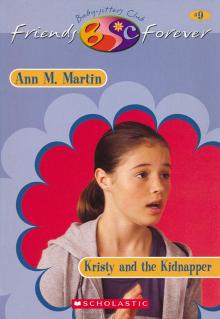 Kristy and Kidnapper
Kristy and Kidnapper Baby-Sitters Club 041
Baby-Sitters Club 041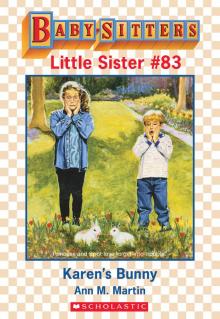 Karen's Bunny Trouble
Karen's Bunny Trouble Baby-Sitters Club 032
Baby-Sitters Club 032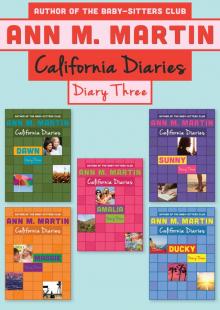 Diary Three
Diary Three Christmas Chiller
Christmas Chiller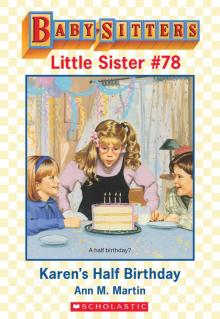 Karen's Half-Birthday
Karen's Half-Birthday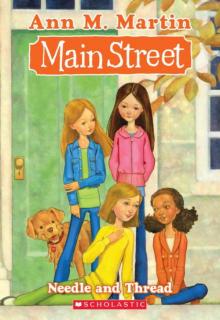 Needle and Thread
Needle and Thread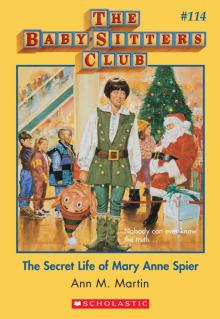 Secret Life of Mary Anne Spier
Secret Life of Mary Anne Spier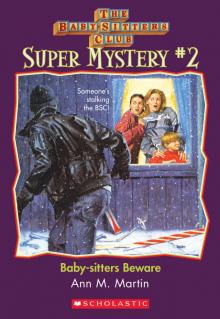 Baby-Sitters Beware
Baby-Sitters Beware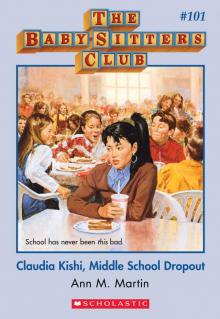 Claudia Kishi, Middle School Drop-Out
Claudia Kishi, Middle School Drop-Out Logan Likes Mary Anne !
Logan Likes Mary Anne ! Baby-Sitters Club 061
Baby-Sitters Club 061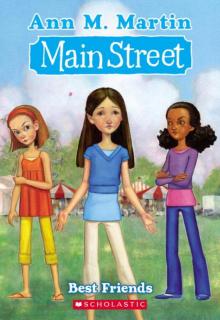 Best Friends
Best Friends Baby-Sitters Club 031
Baby-Sitters Club 031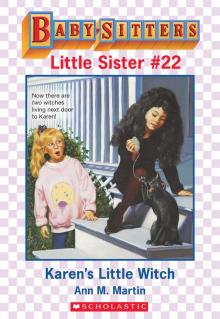 Karen's Little Witch
Karen's Little Witch Jessi Ramsey, Petsitter
Jessi Ramsey, Petsitter Baby-Sitters Club 123
Baby-Sitters Club 123 Baby-Sitters Club 059
Baby-Sitters Club 059 Baby-Sitters Club 033
Baby-Sitters Club 033 Baby-Sitters Club 060
Baby-Sitters Club 060 Baby-Sitters Club 094
Baby-Sitters Club 094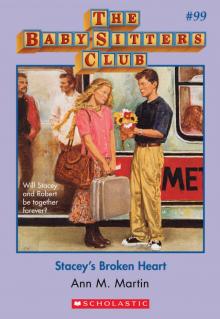 The Baby-Sitters Club #99: Stacey's Broken Heart
The Baby-Sitters Club #99: Stacey's Broken Heart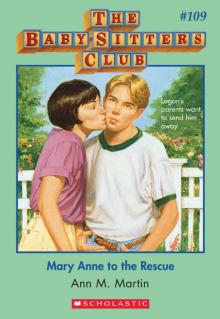 The Baby-Sitters Club #109: Mary Anne to the Rescue (Baby-Sitters Club, The)
The Baby-Sitters Club #109: Mary Anne to the Rescue (Baby-Sitters Club, The) Mystery At Claudia's House
Mystery At Claudia's House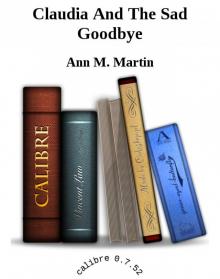 Claudia And The Sad Goodbye
Claudia And The Sad Goodbye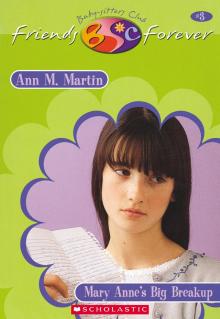 Mary Anne's Big Break-Up
Mary Anne's Big Break-Up Baby-Sitters Club 025
Baby-Sitters Club 025 Baby-Sitters Club 042
Baby-Sitters Club 042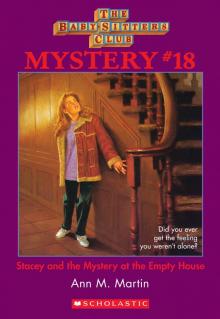 Stacey and the Mystery of the Empty House
Stacey and the Mystery of the Empty House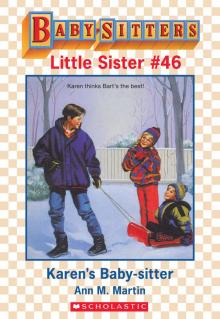 Karen's Baby-Sitter
Karen's Baby-Sitter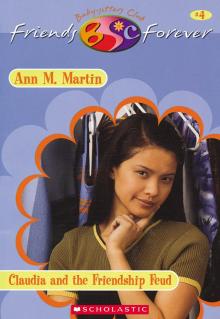 Claudia's Friendship Feud
Claudia's Friendship Feud Baby-Sitters Club 090
Baby-Sitters Club 090 Baby-Sitters Club 021
Baby-Sitters Club 021 Baby-Sitters Club 056
Baby-Sitters Club 056 Baby-Sitters Club 040
Baby-Sitters Club 040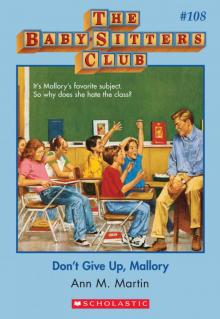 The Baby-Sitters Club #108: Don't Give Up, Mallory (Baby-Sitters Club, The)
The Baby-Sitters Club #108: Don't Give Up, Mallory (Baby-Sitters Club, The)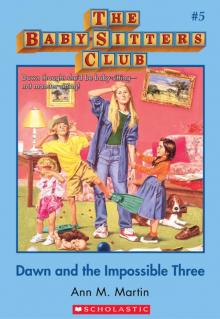 Dawn and the Impossible Three
Dawn and the Impossible Three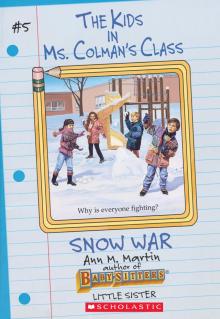 The Snow War
The Snow War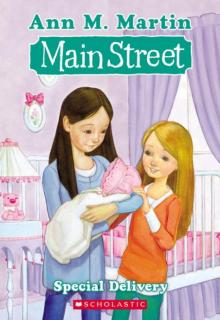 Special Delivery
Special Delivery Baby-Sitters Club 057
Baby-Sitters Club 057 Mary Anne And Too Many Babies
Mary Anne And Too Many Babies Baby-Sitters Club 030
Baby-Sitters Club 030